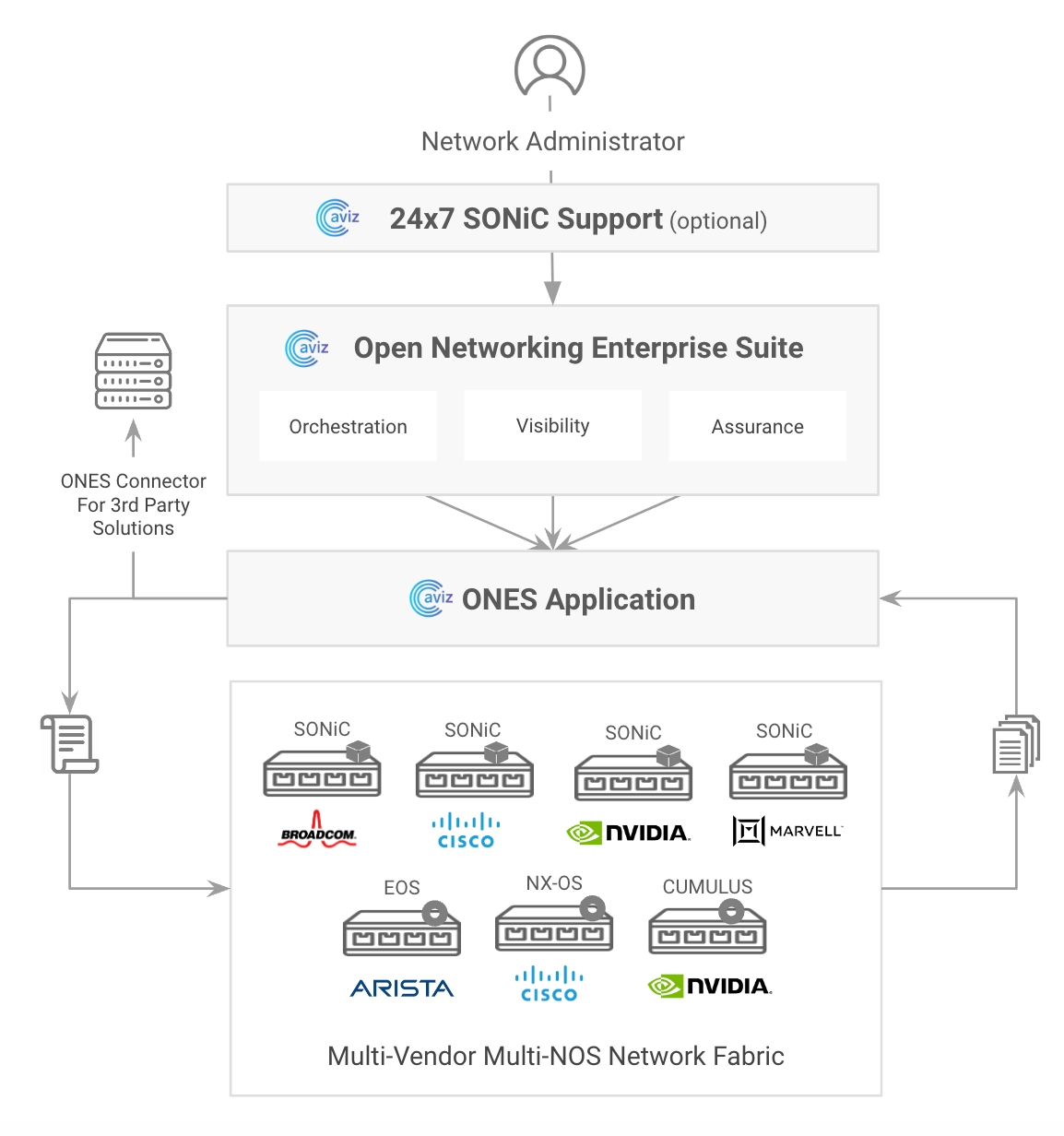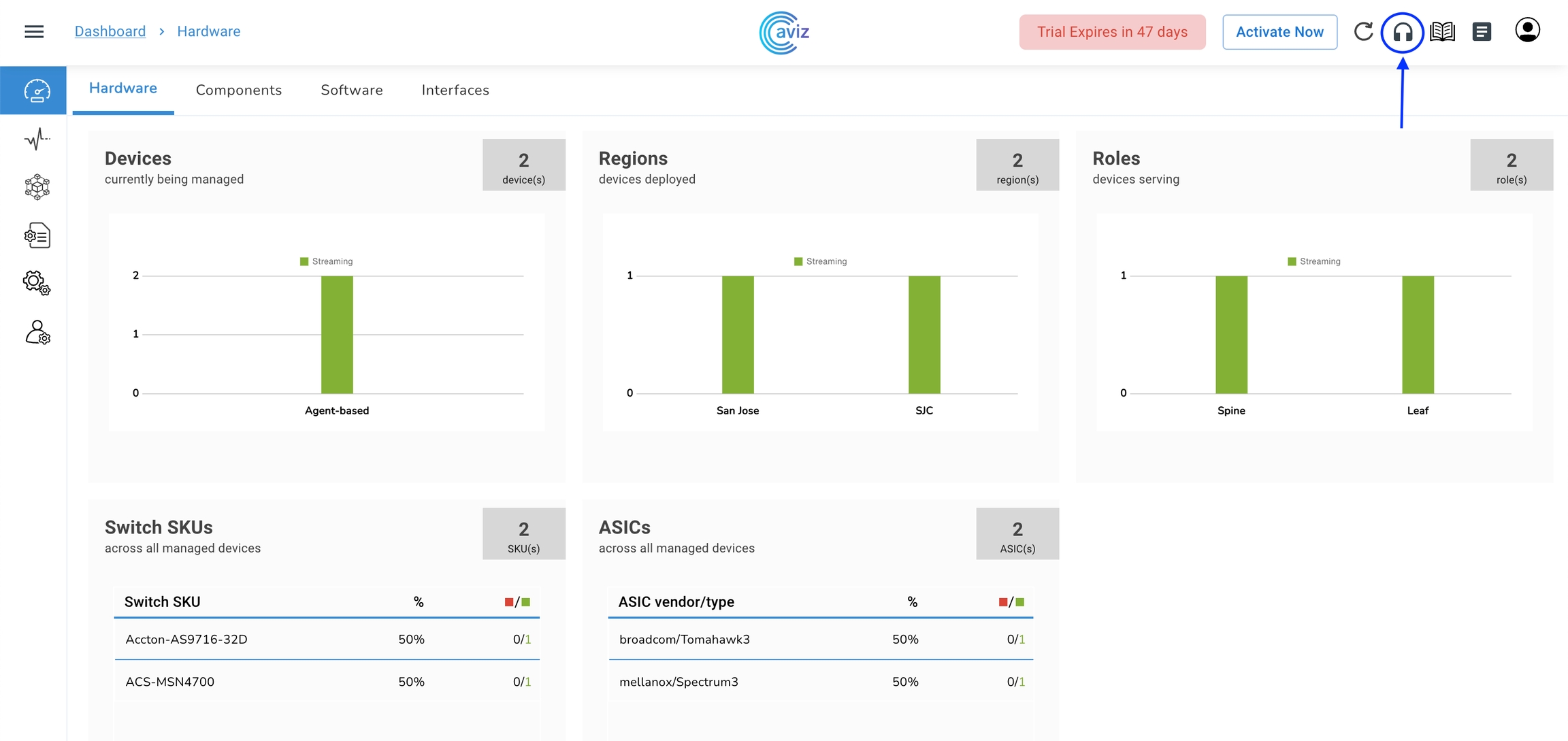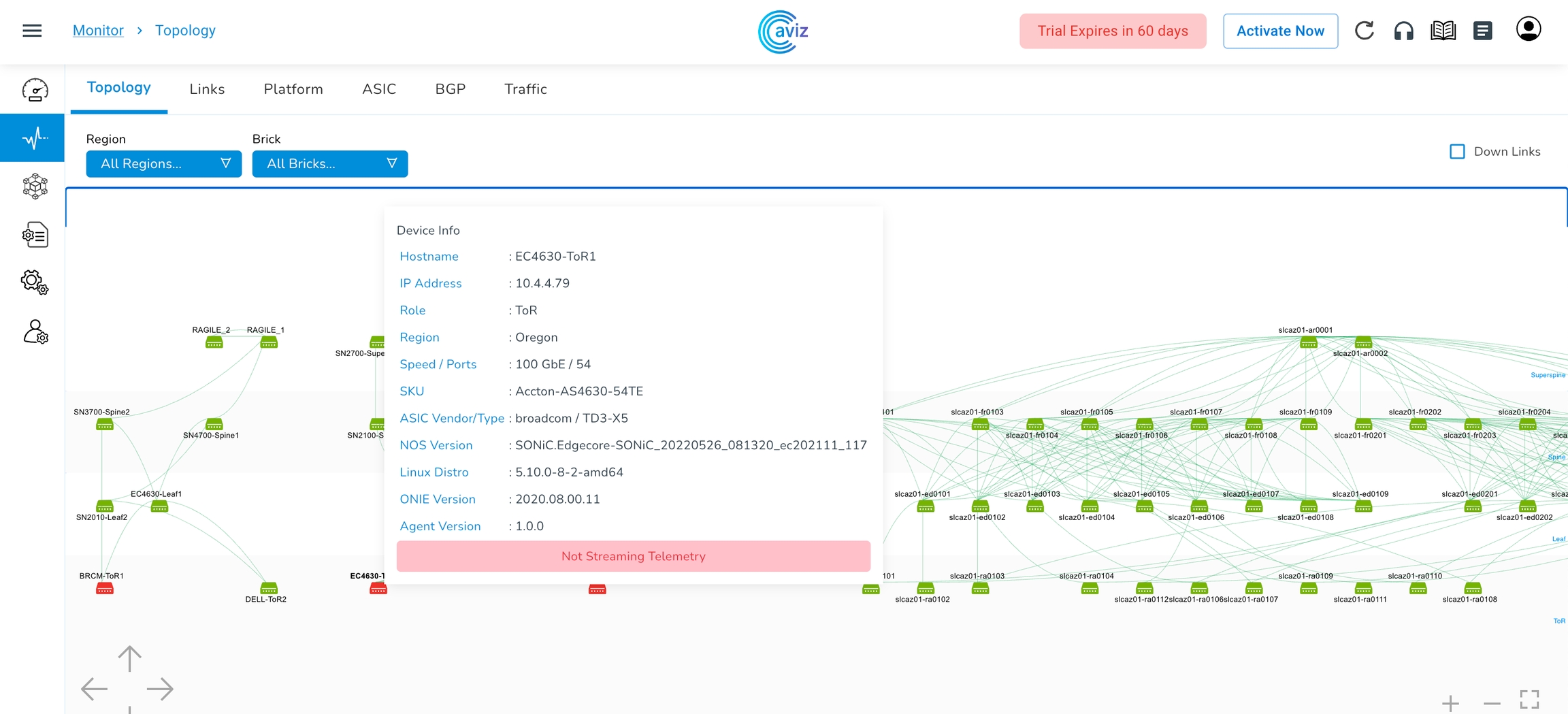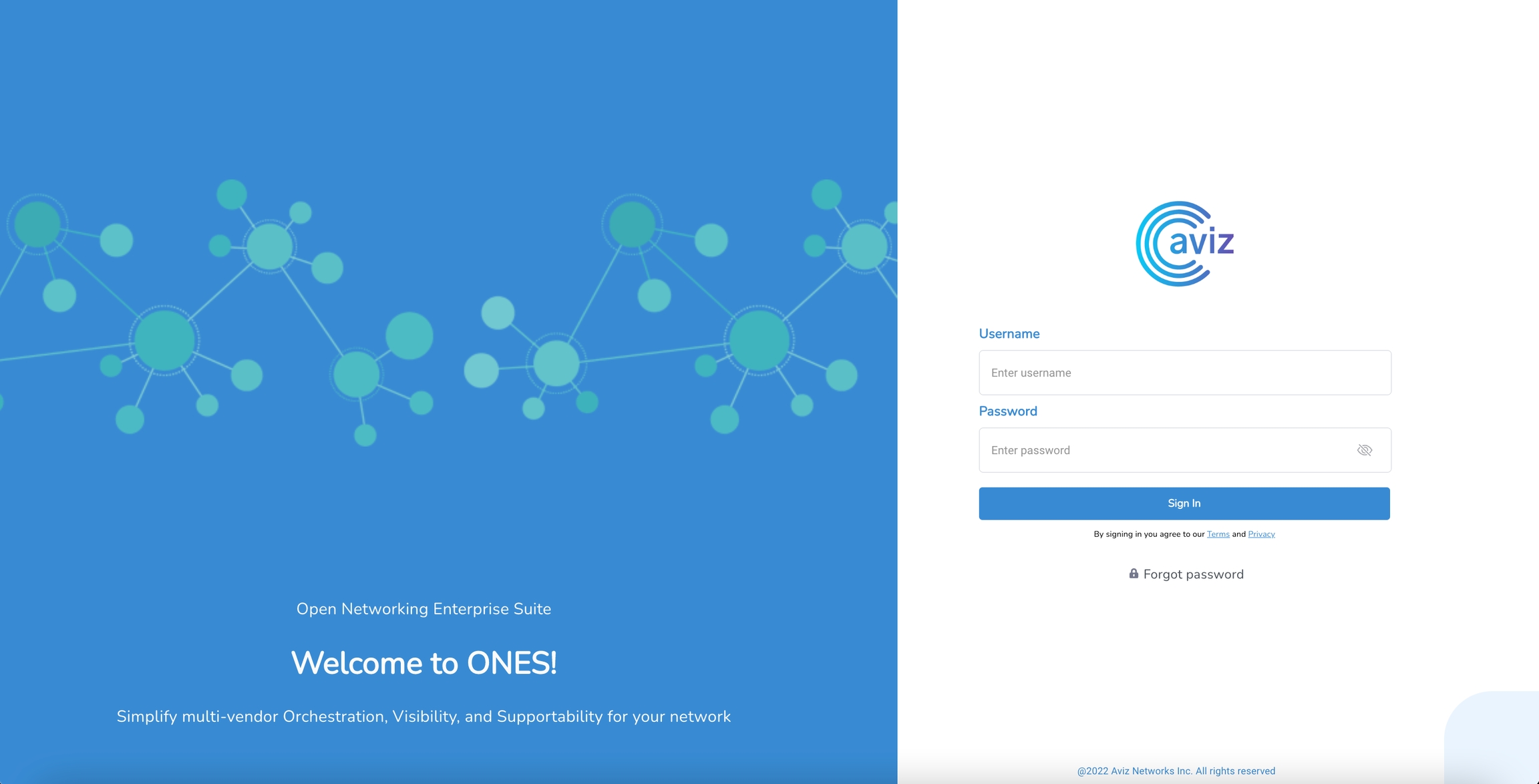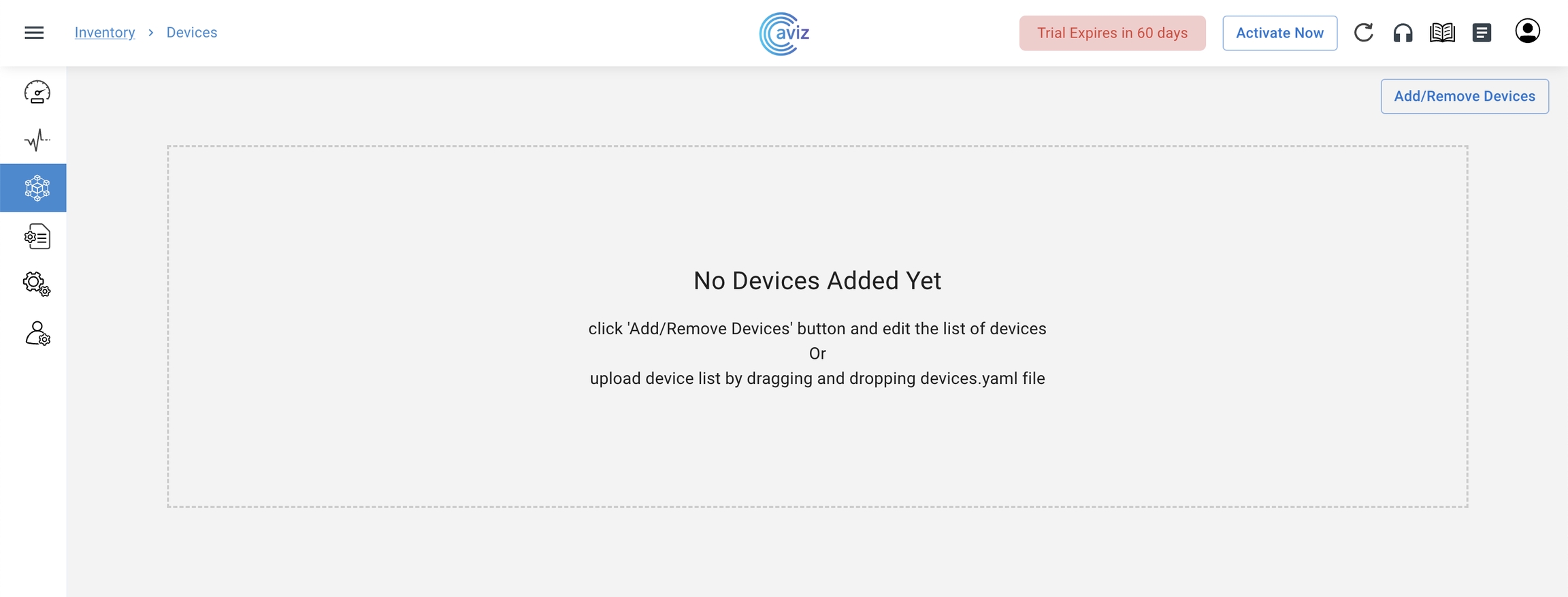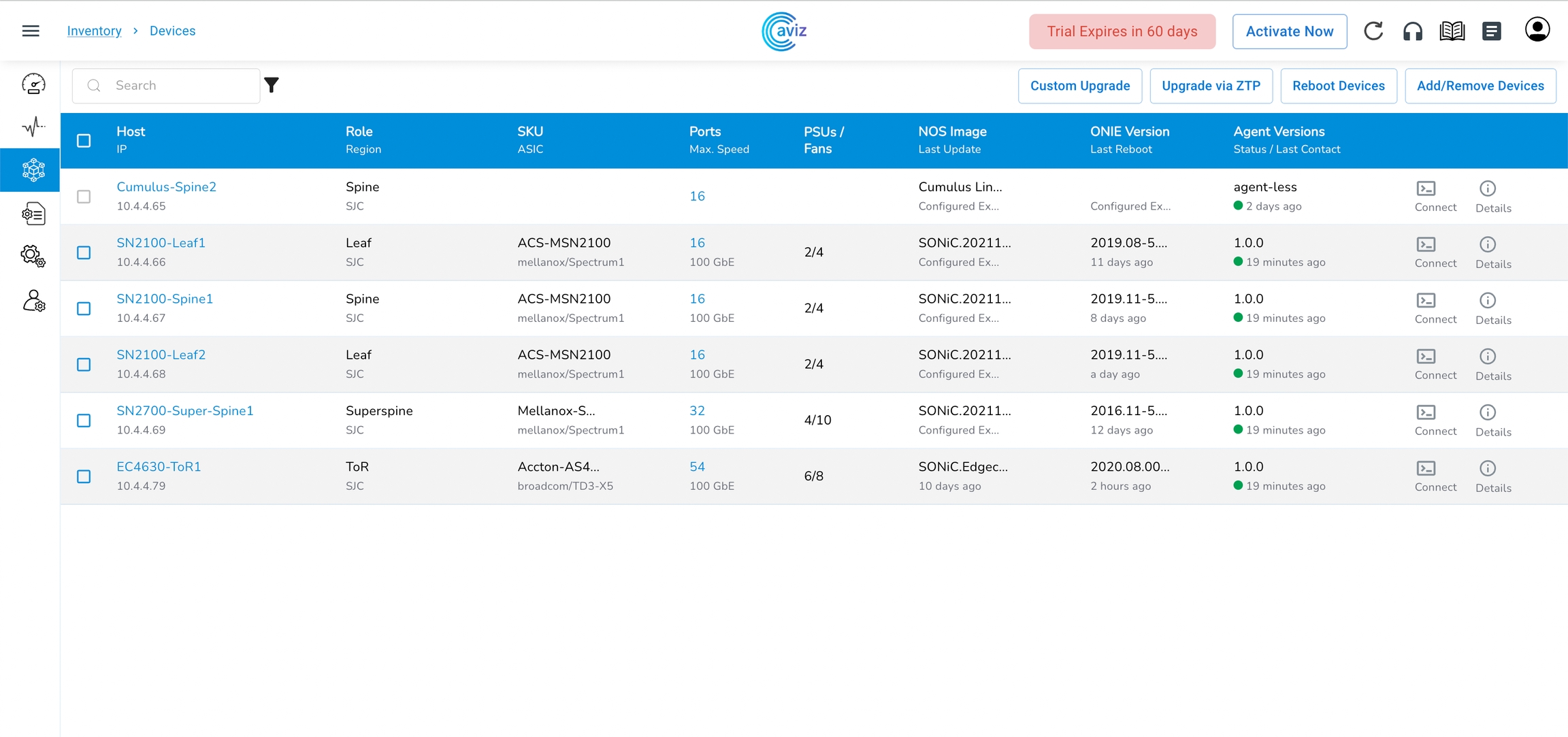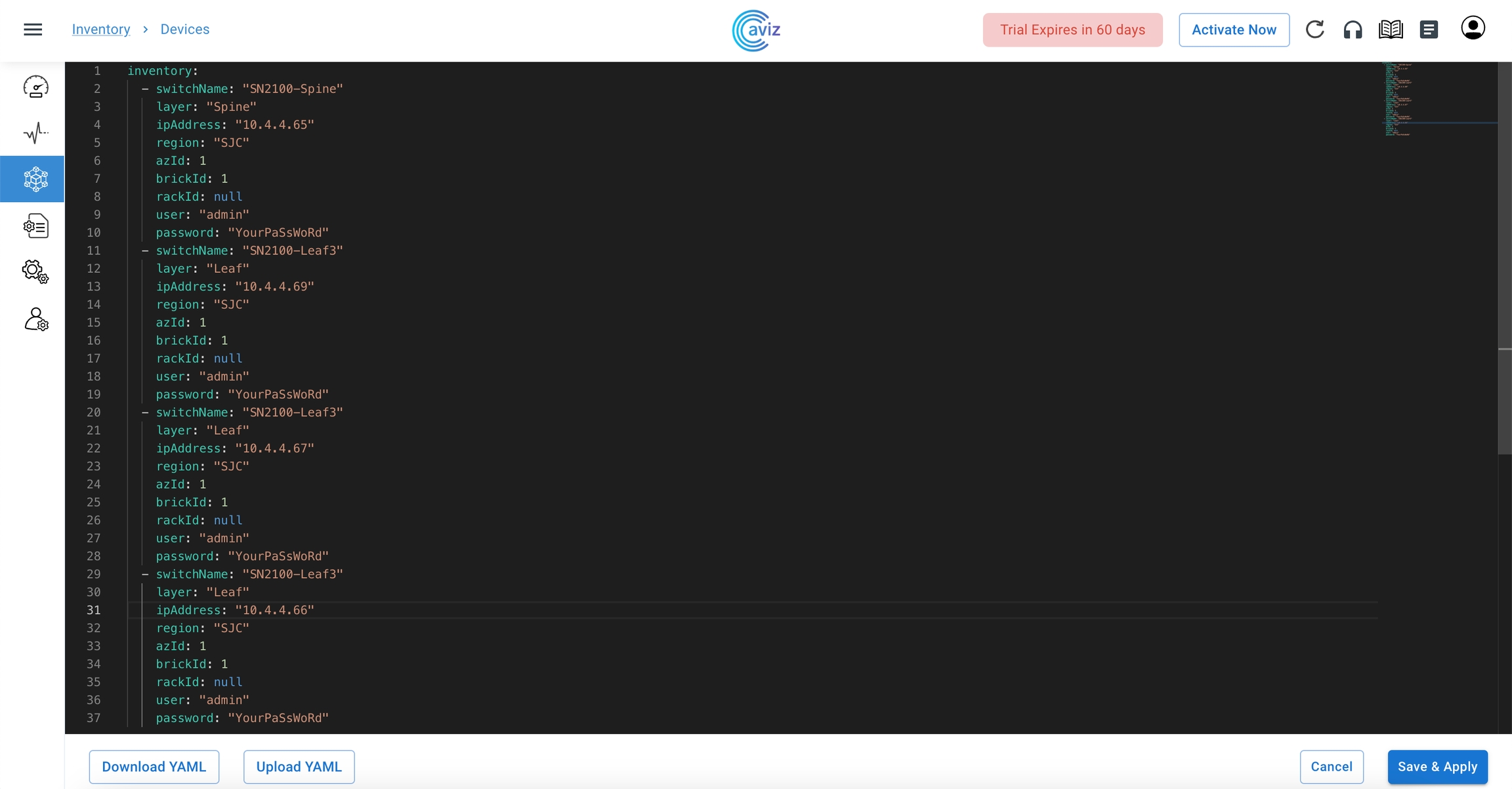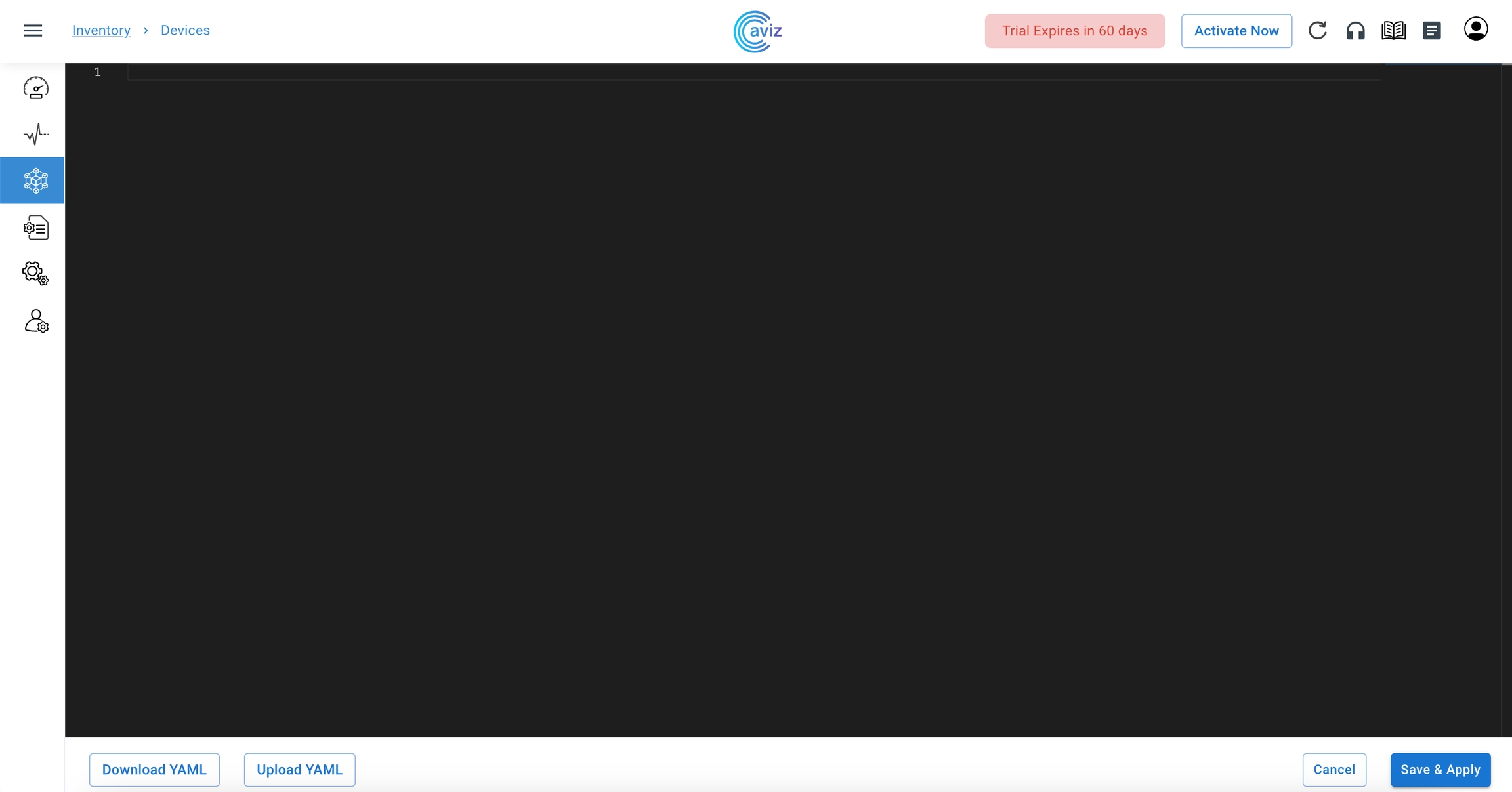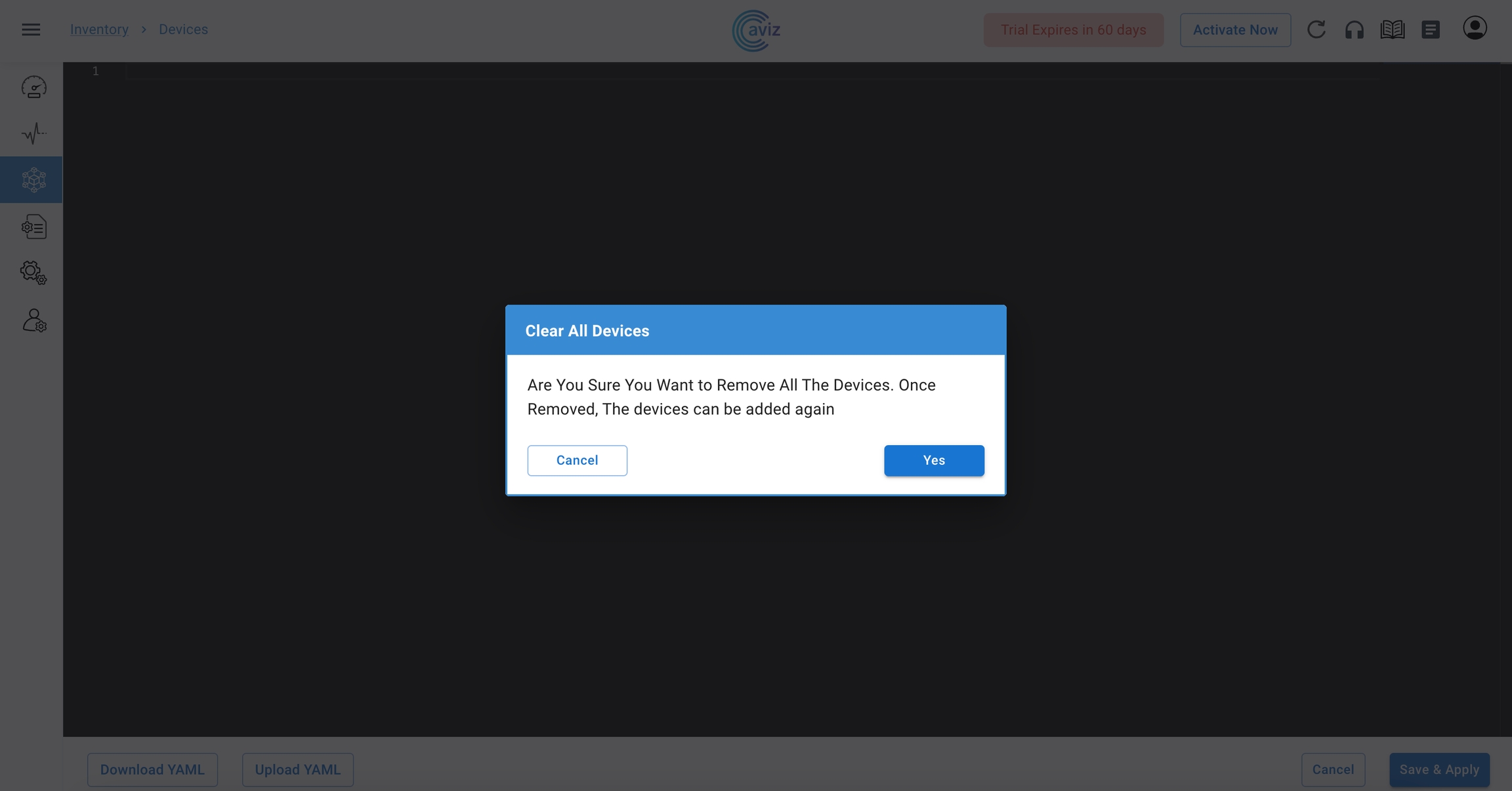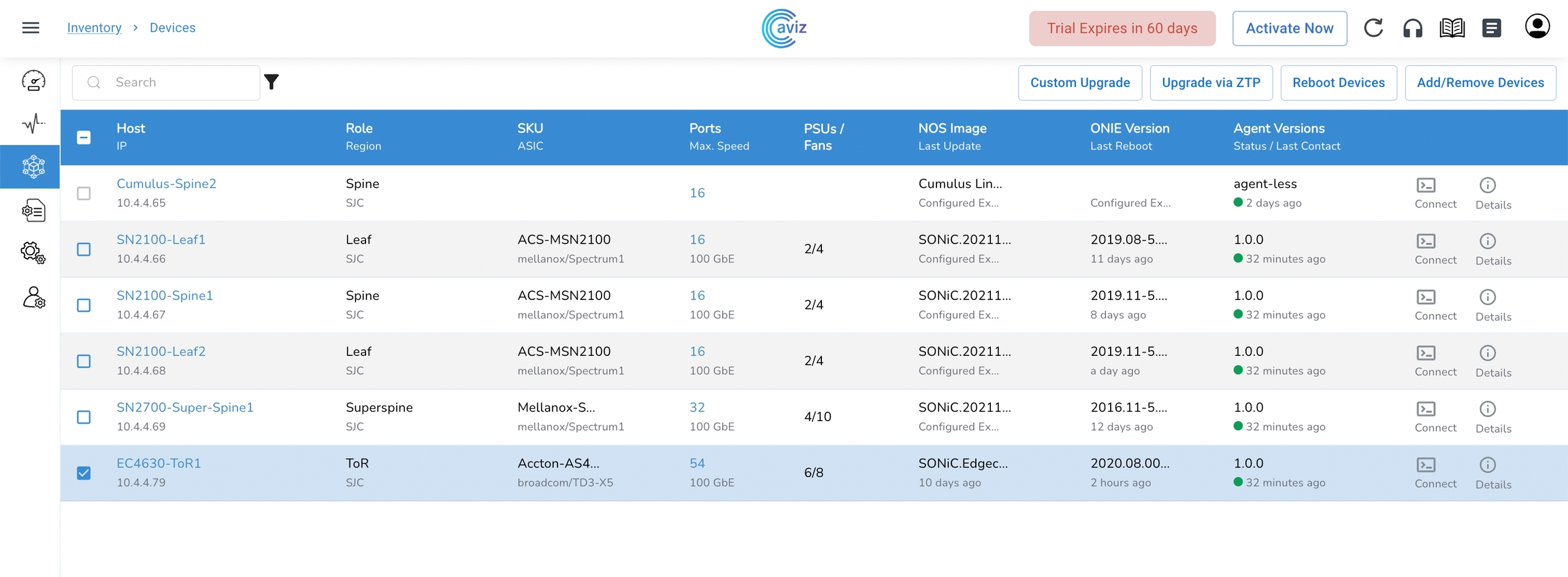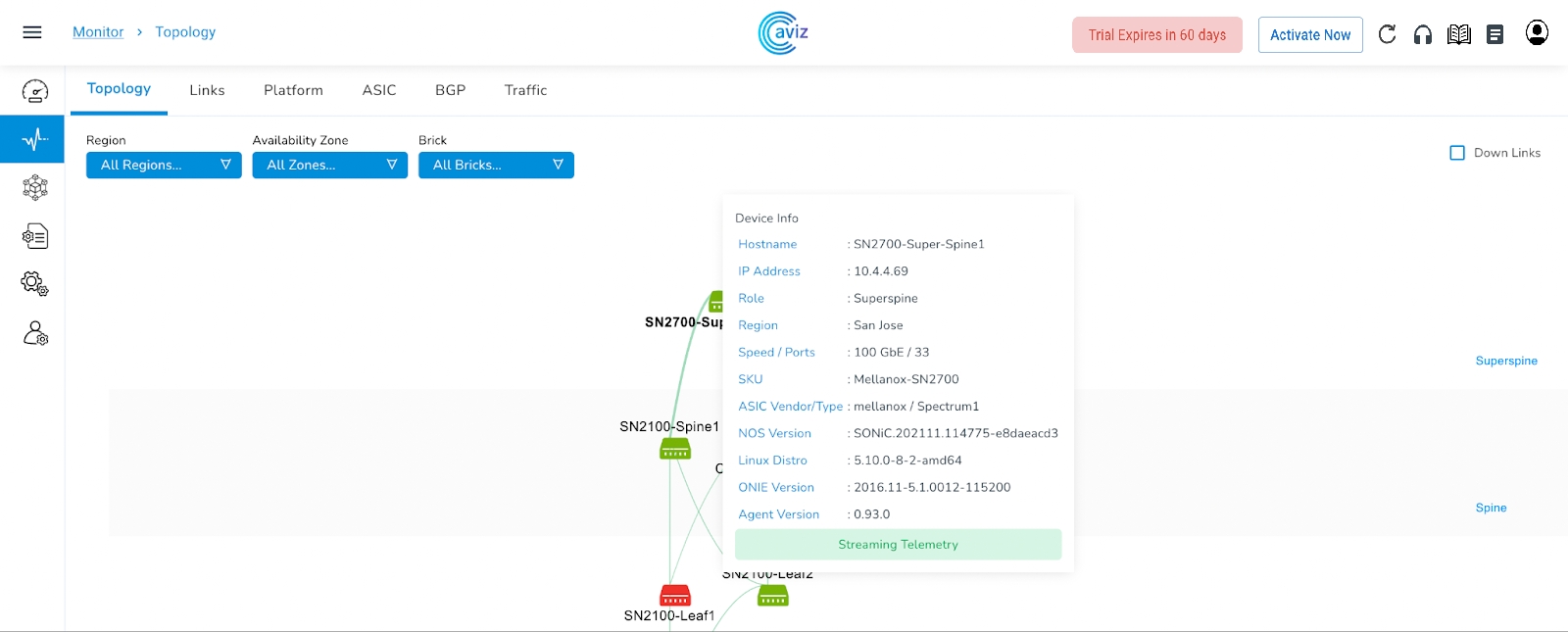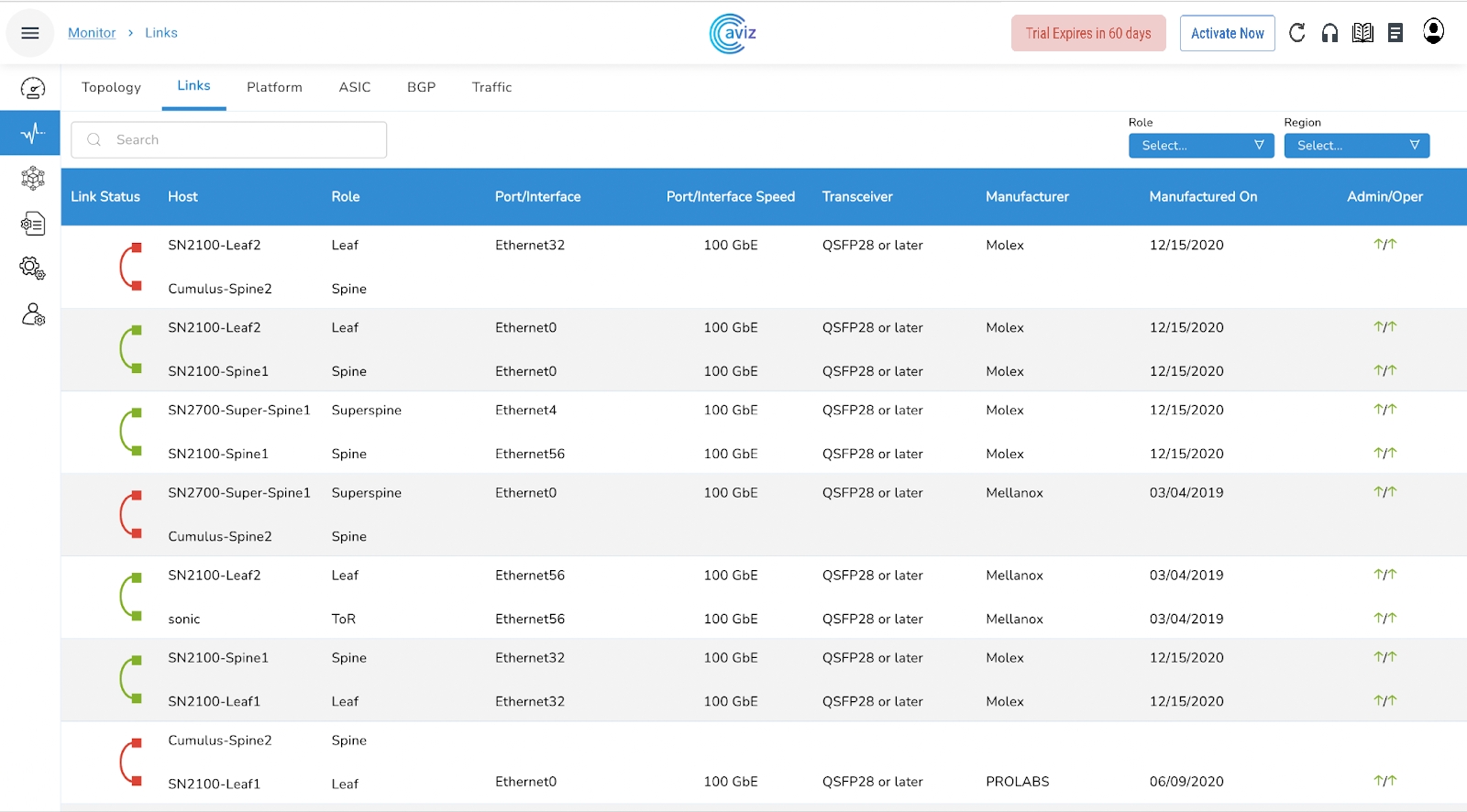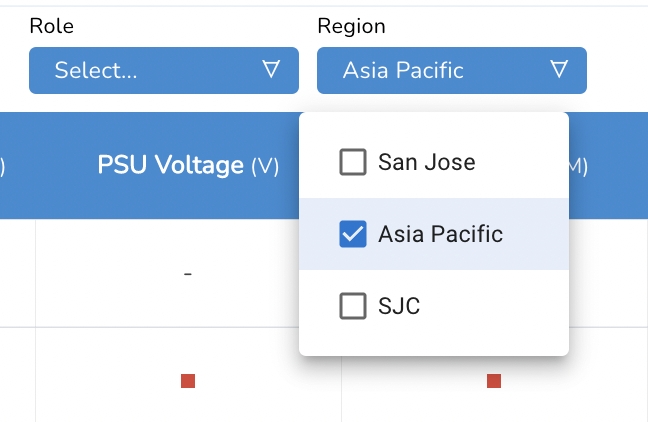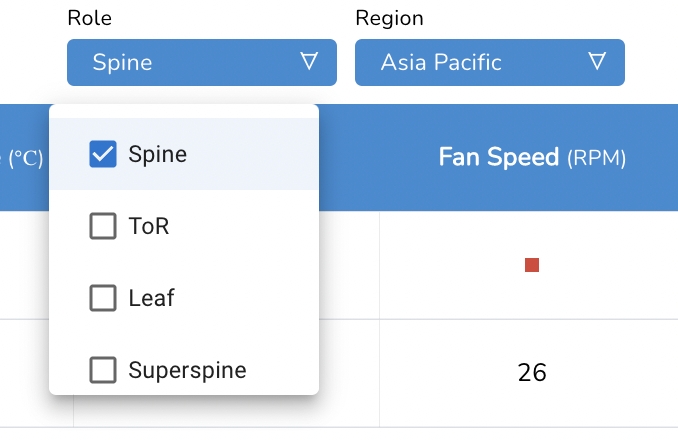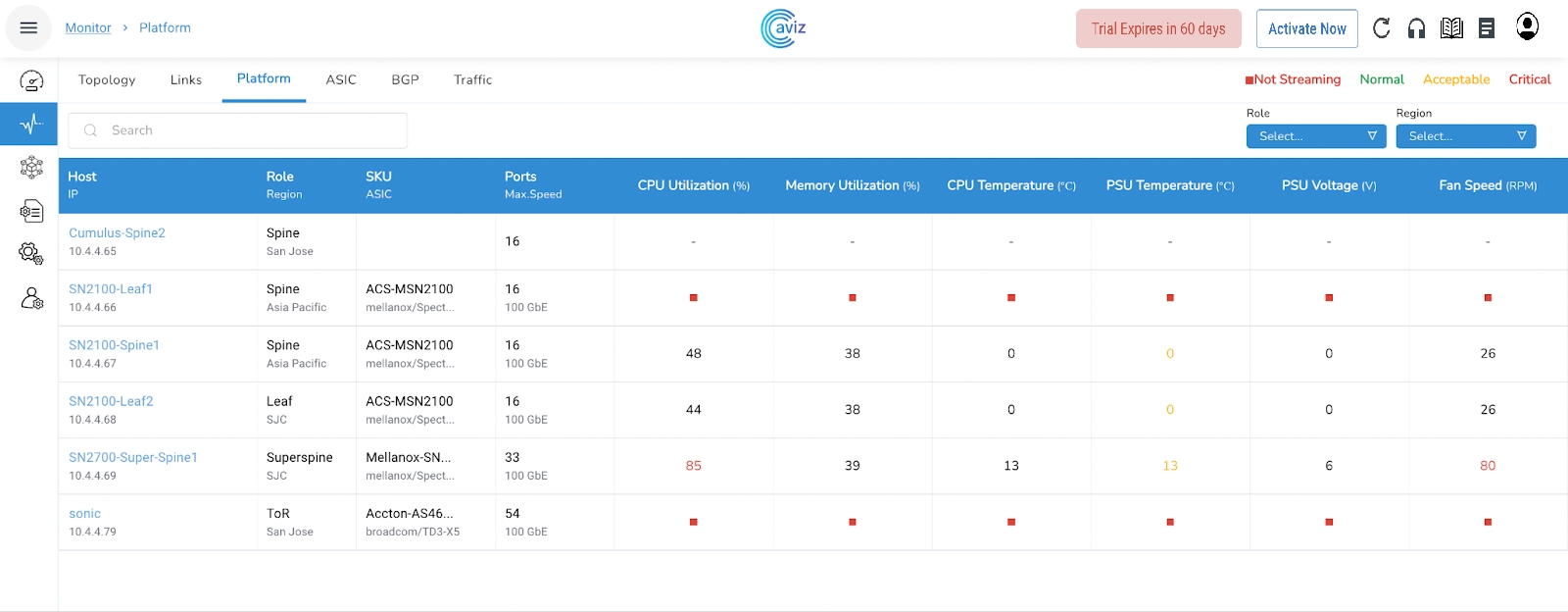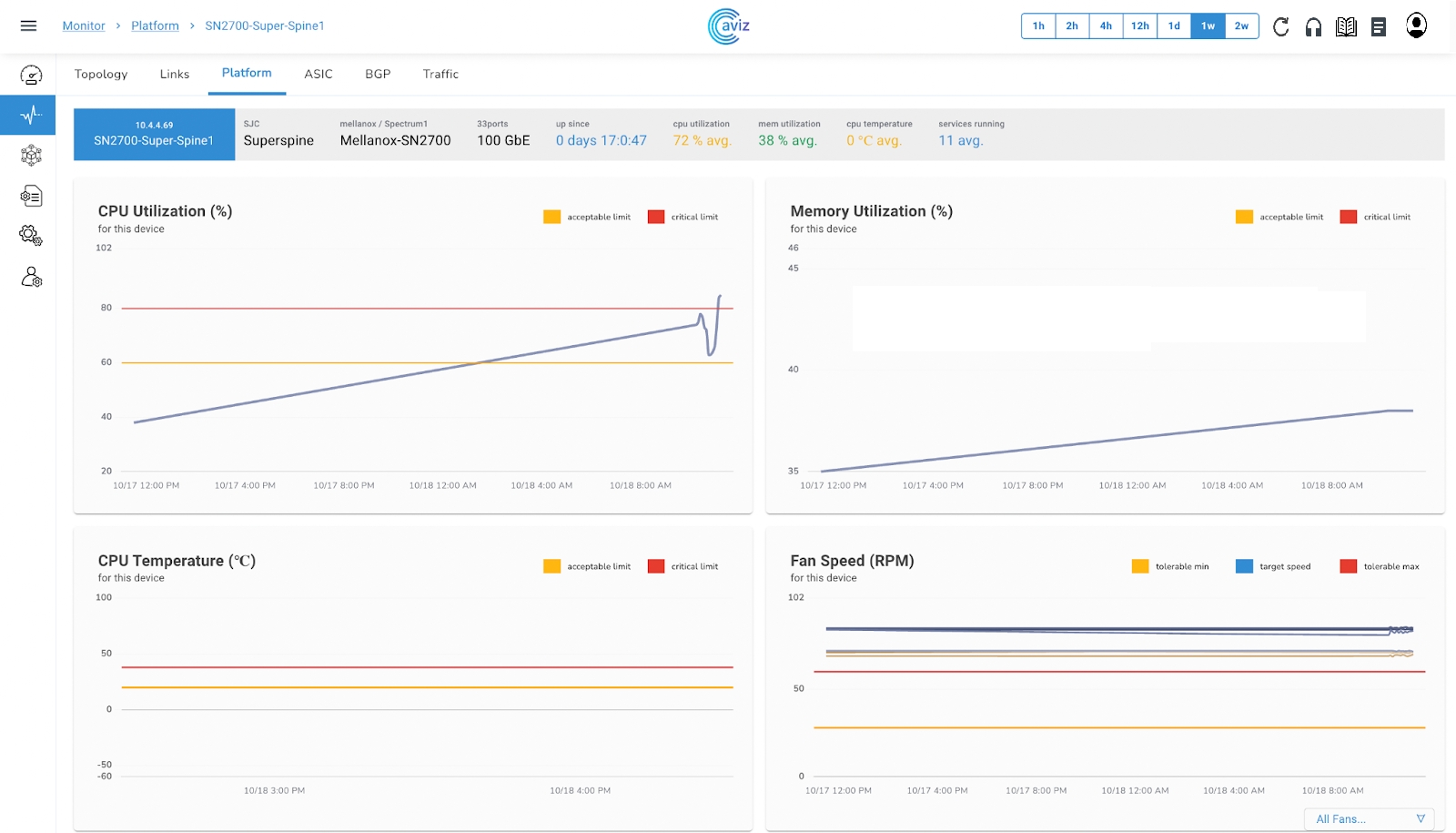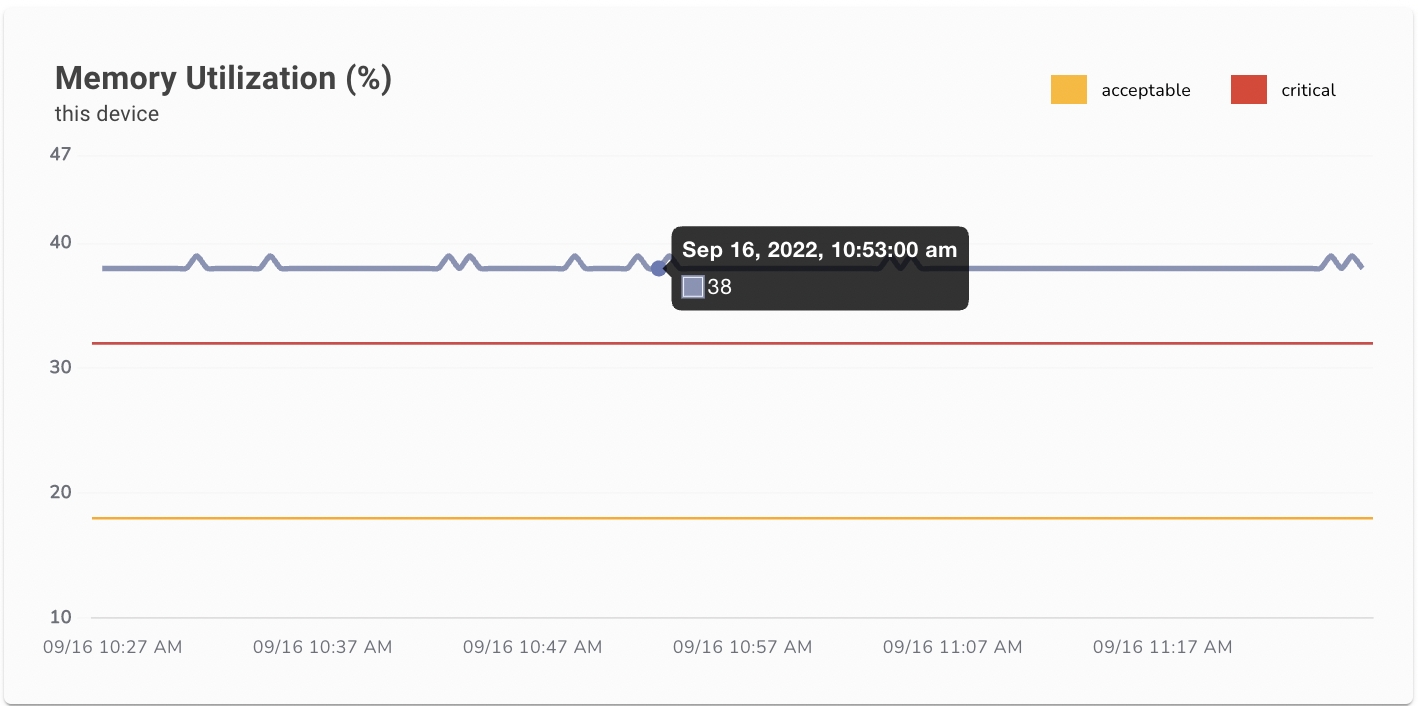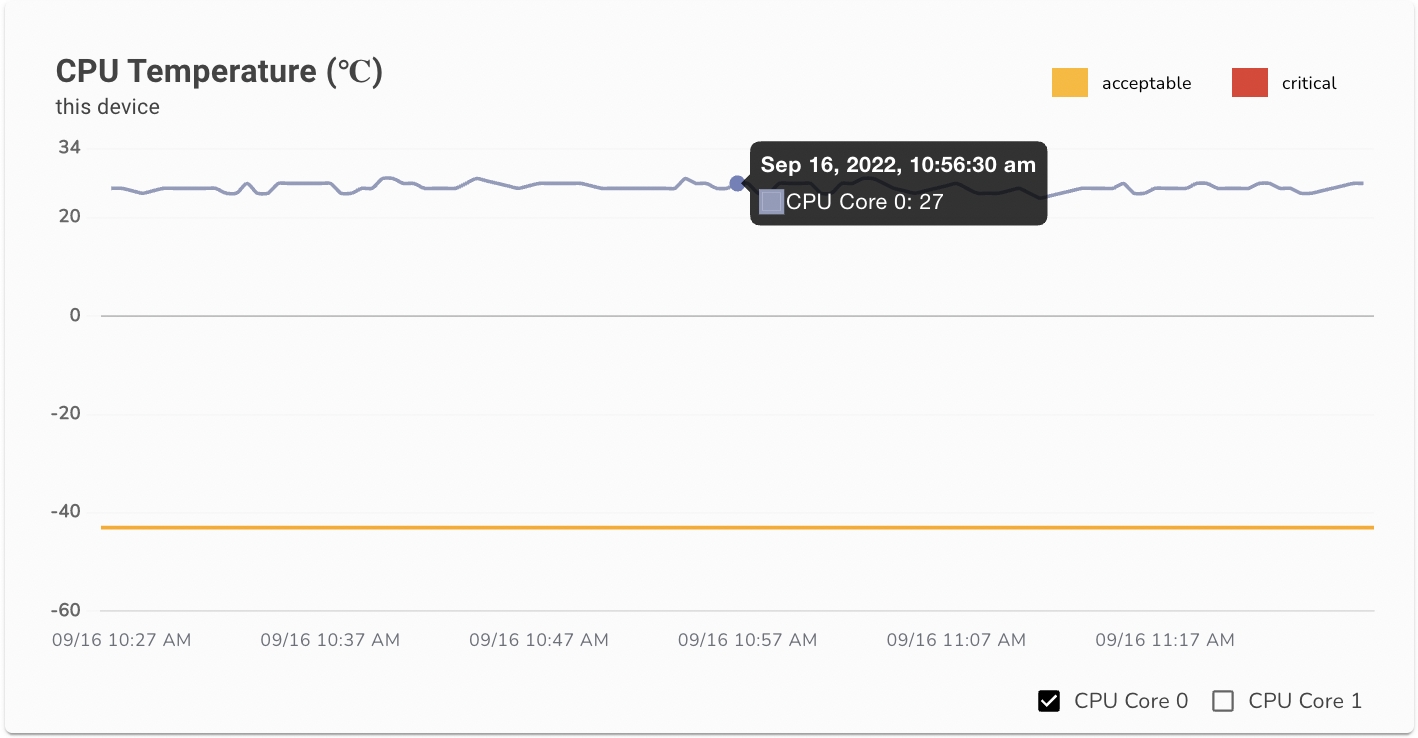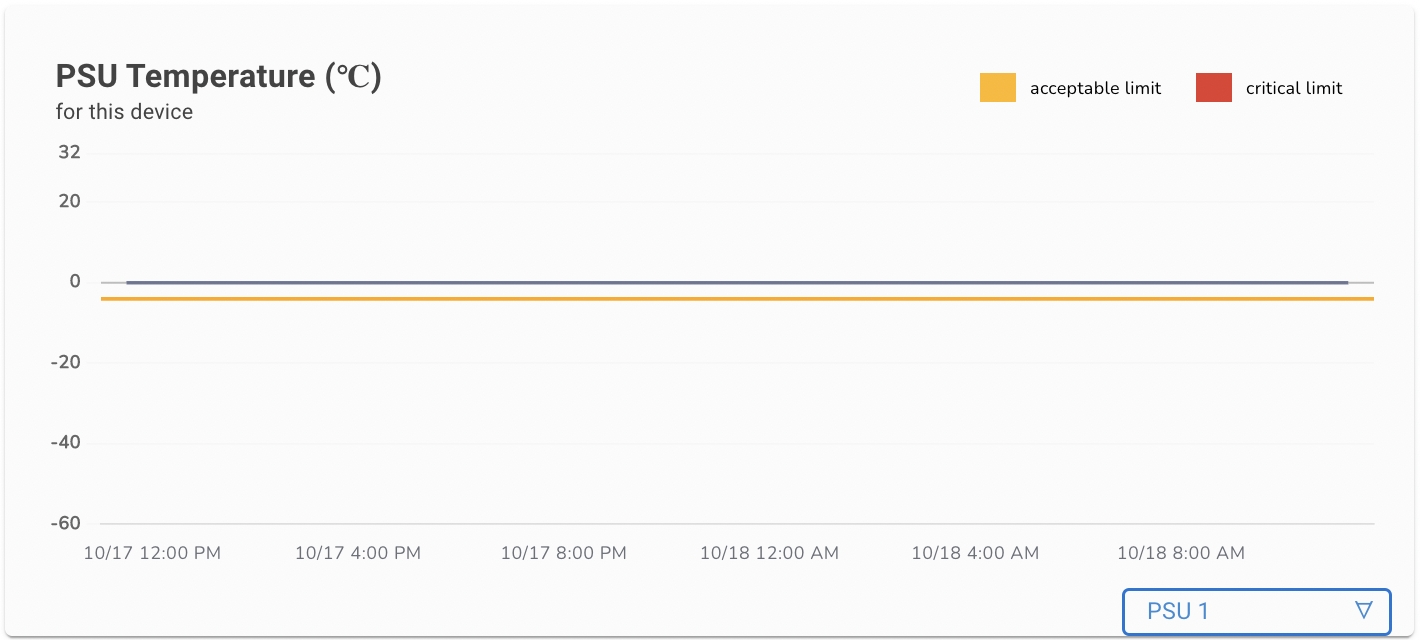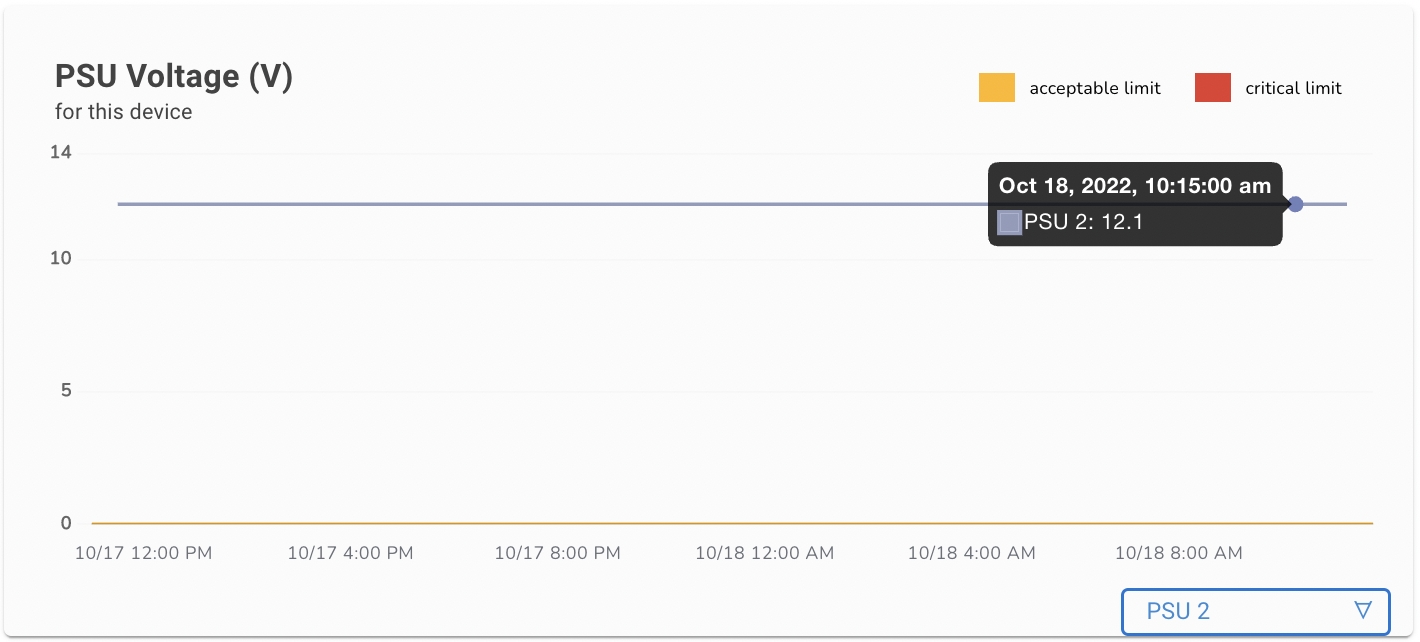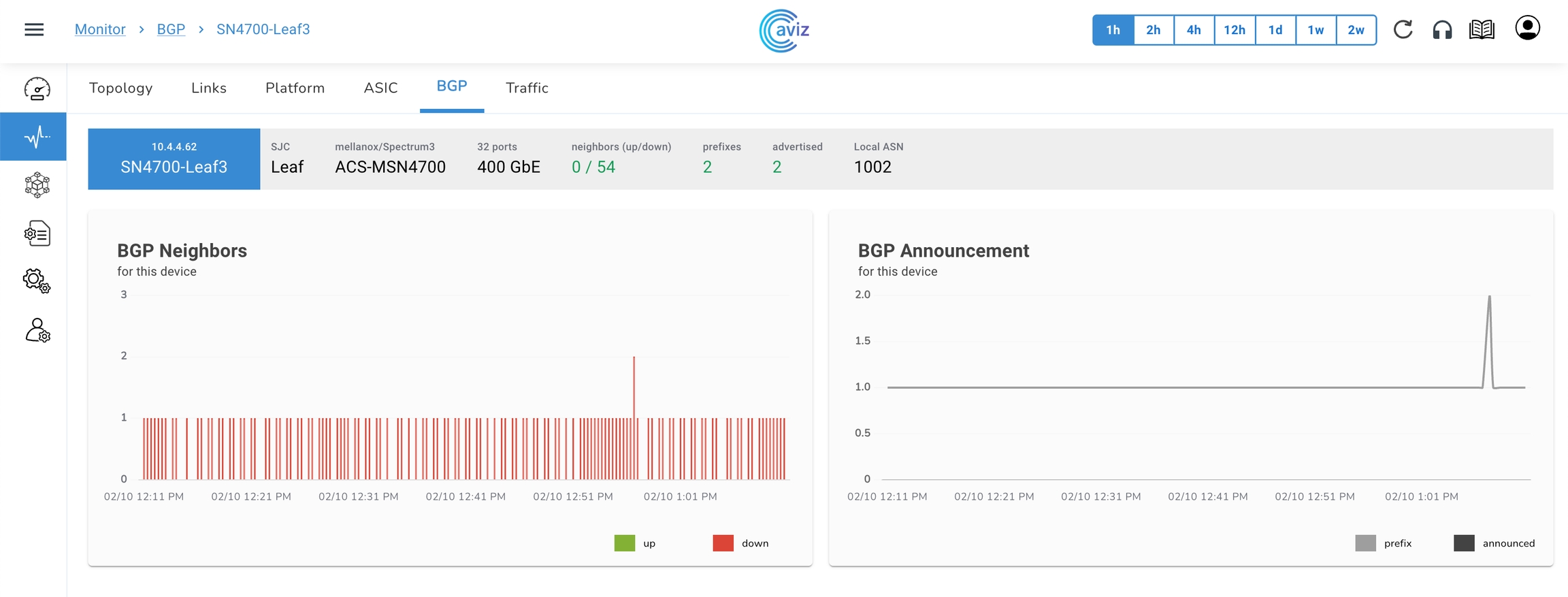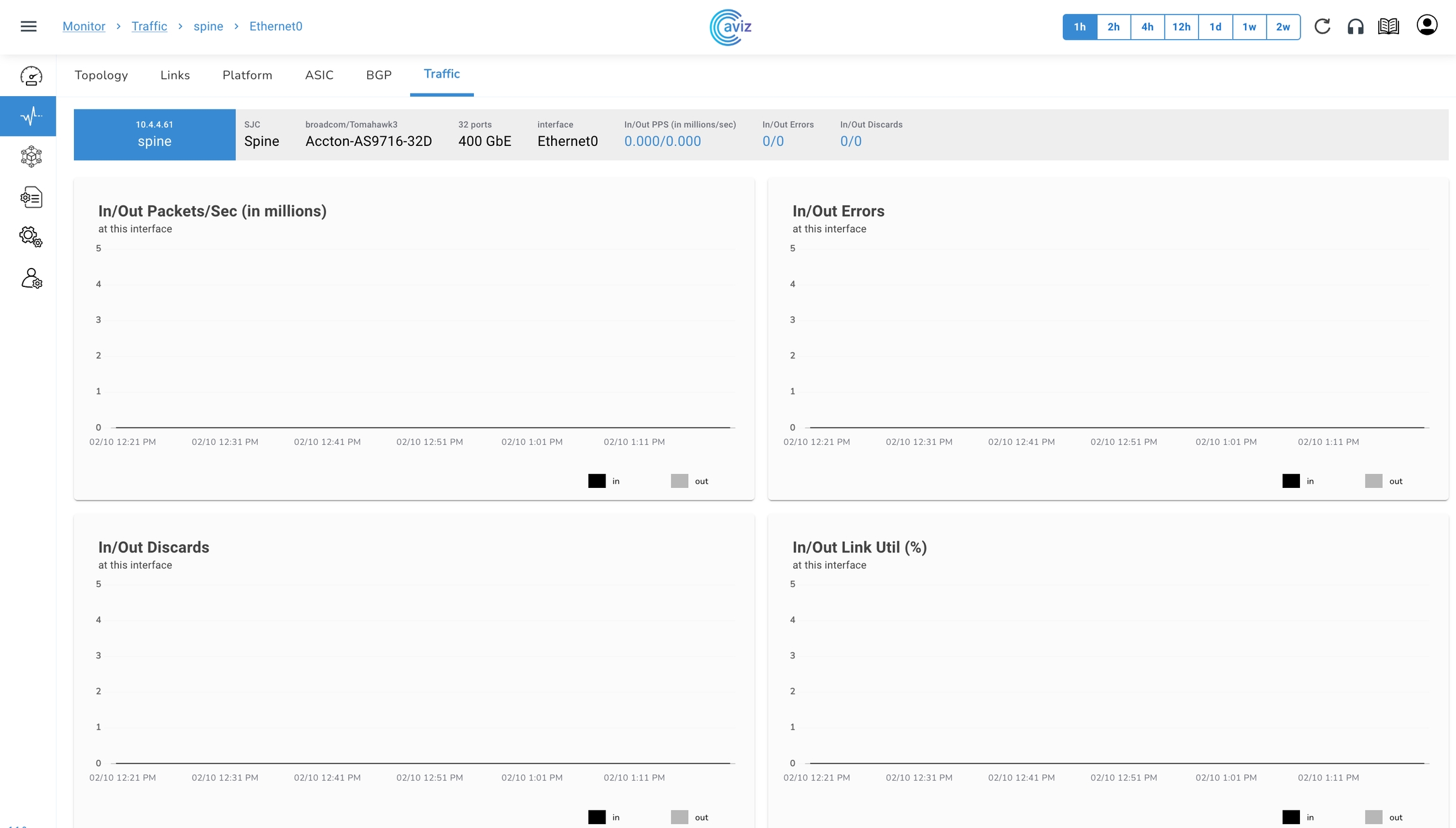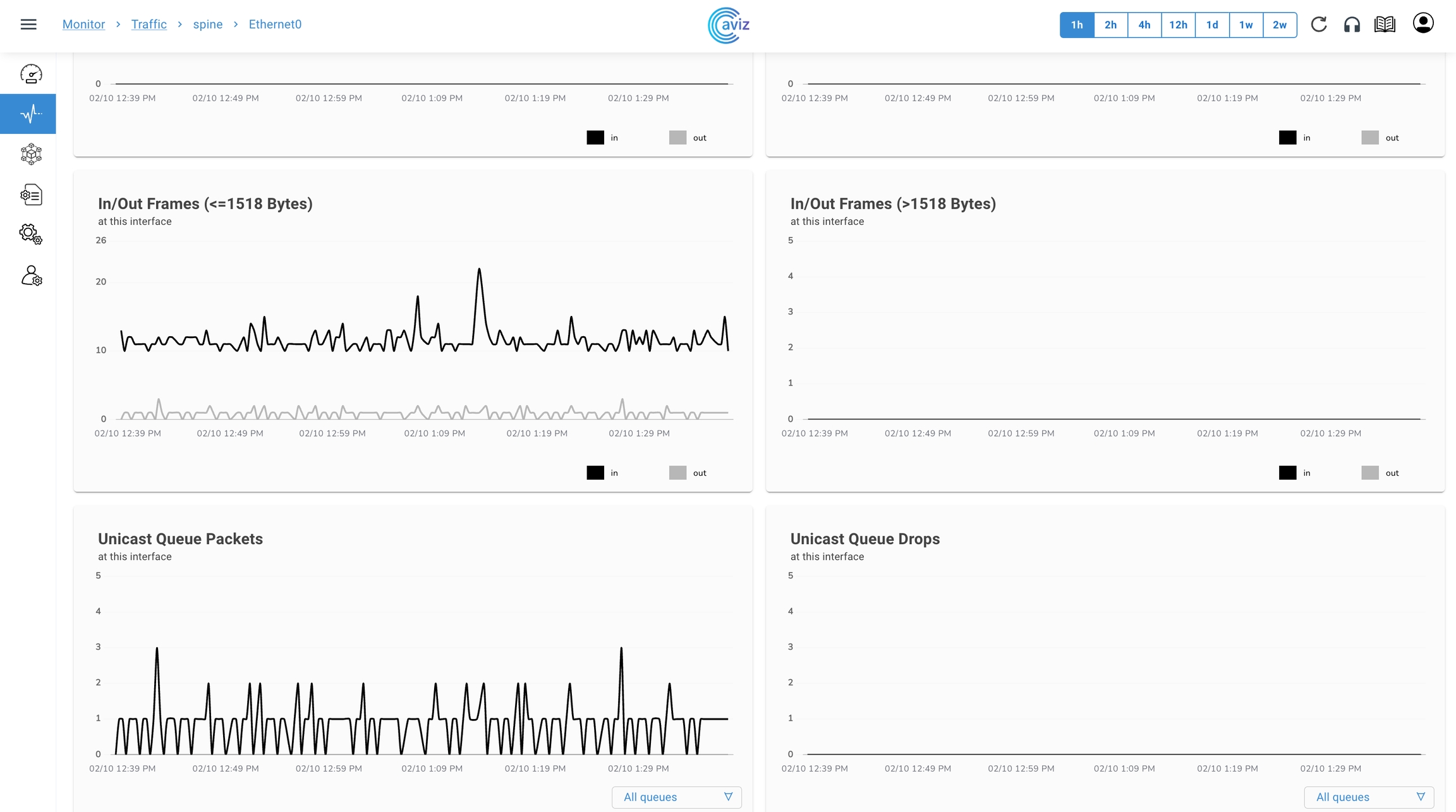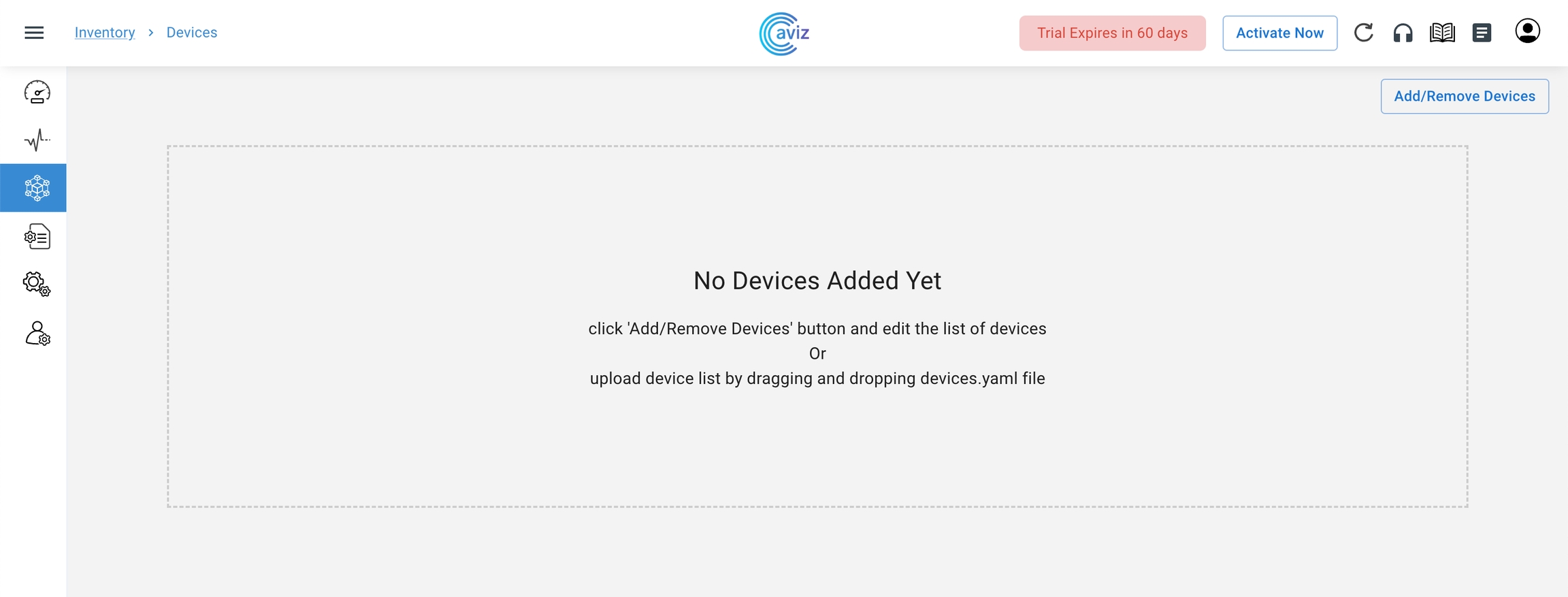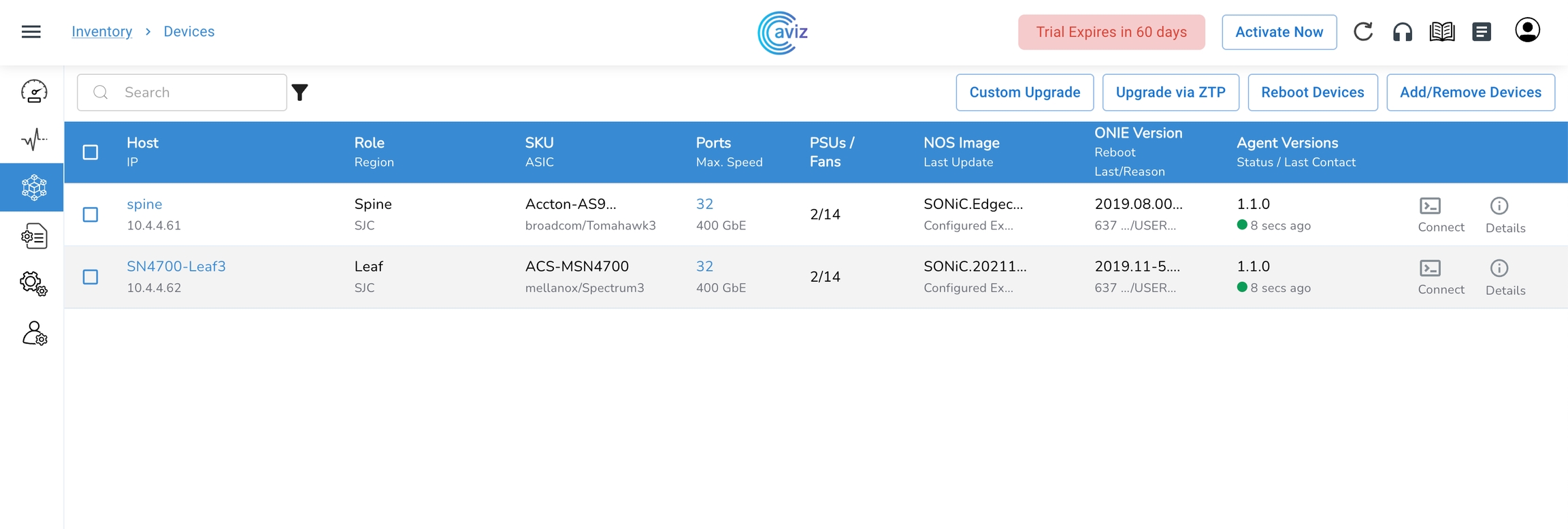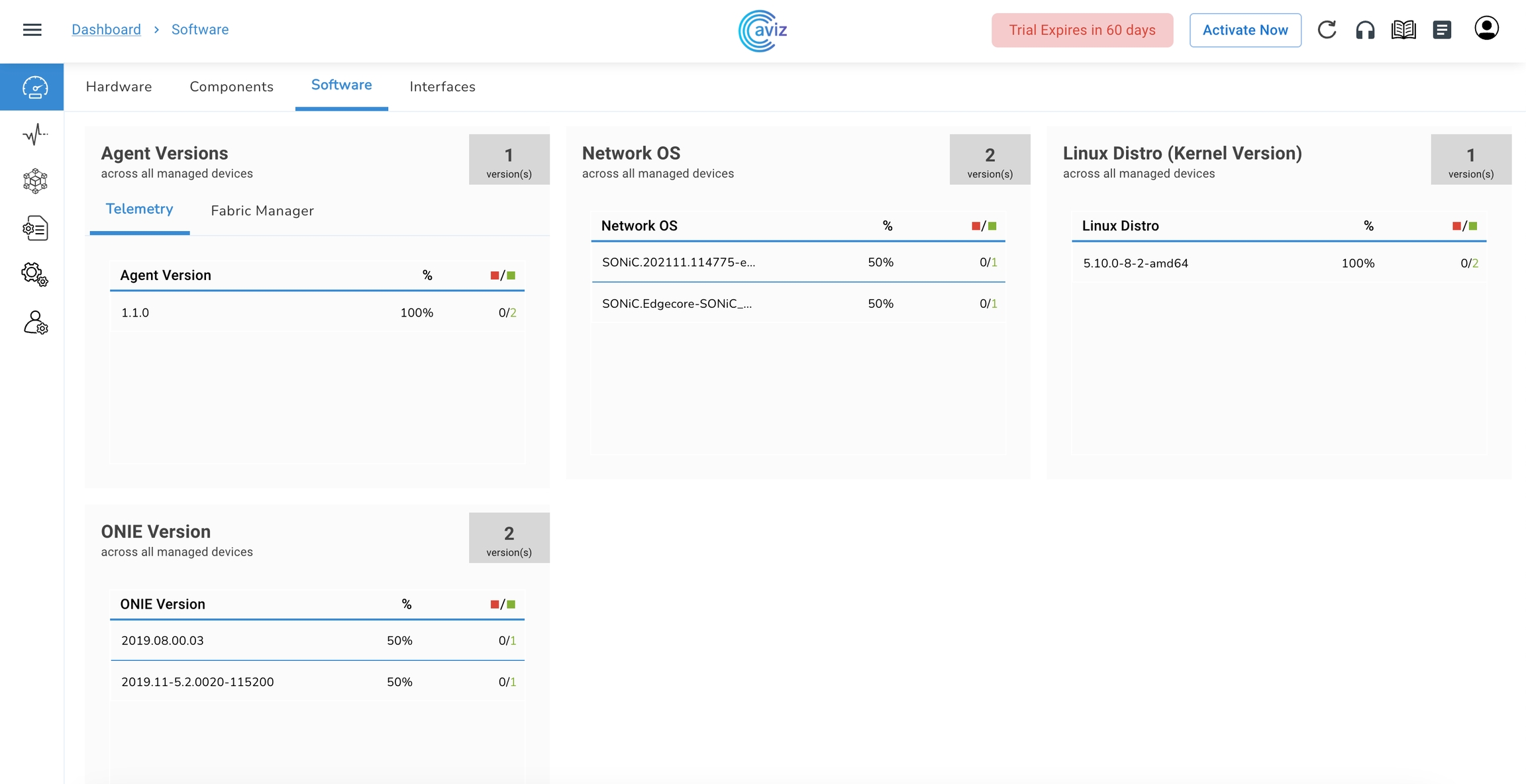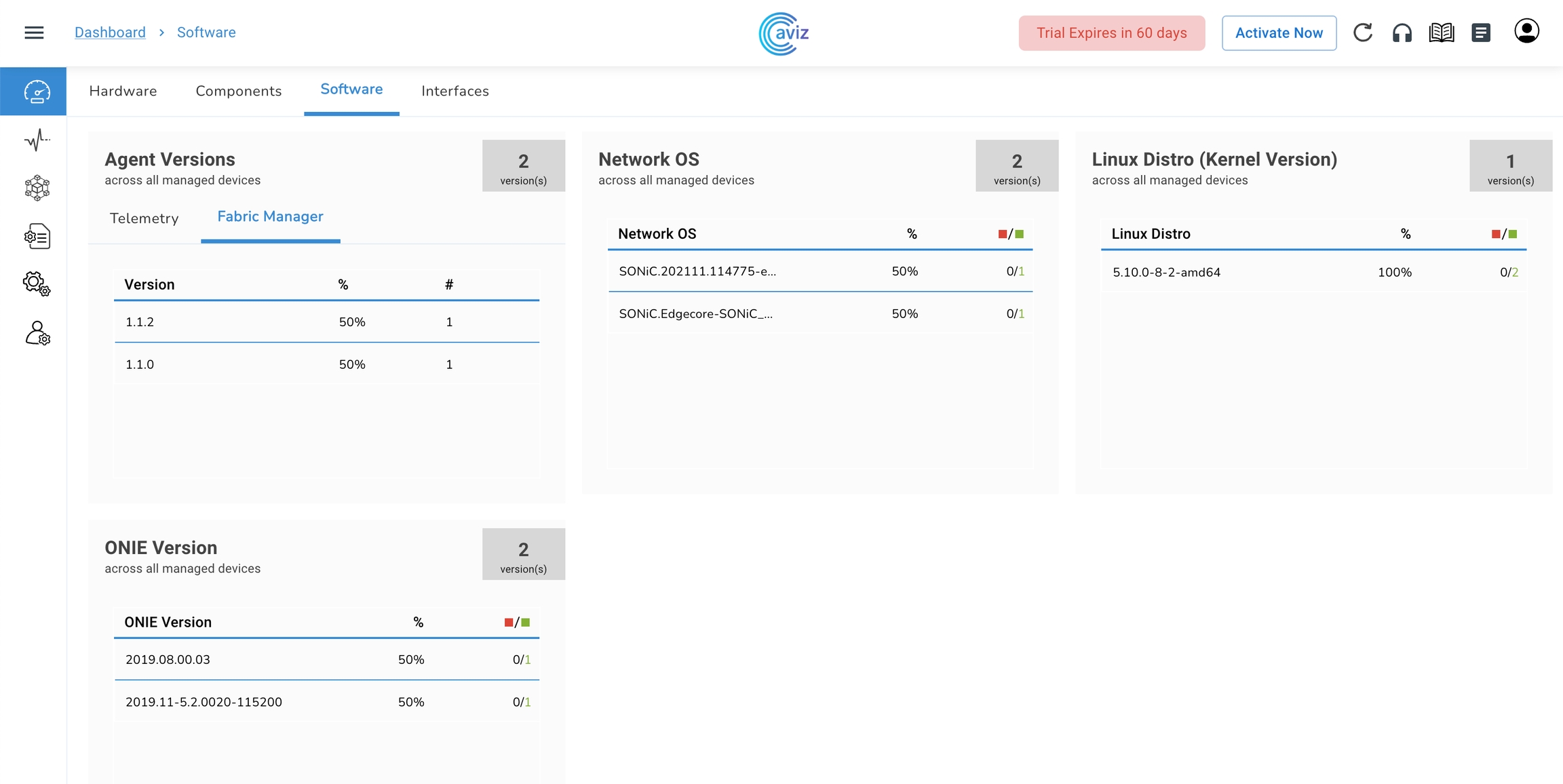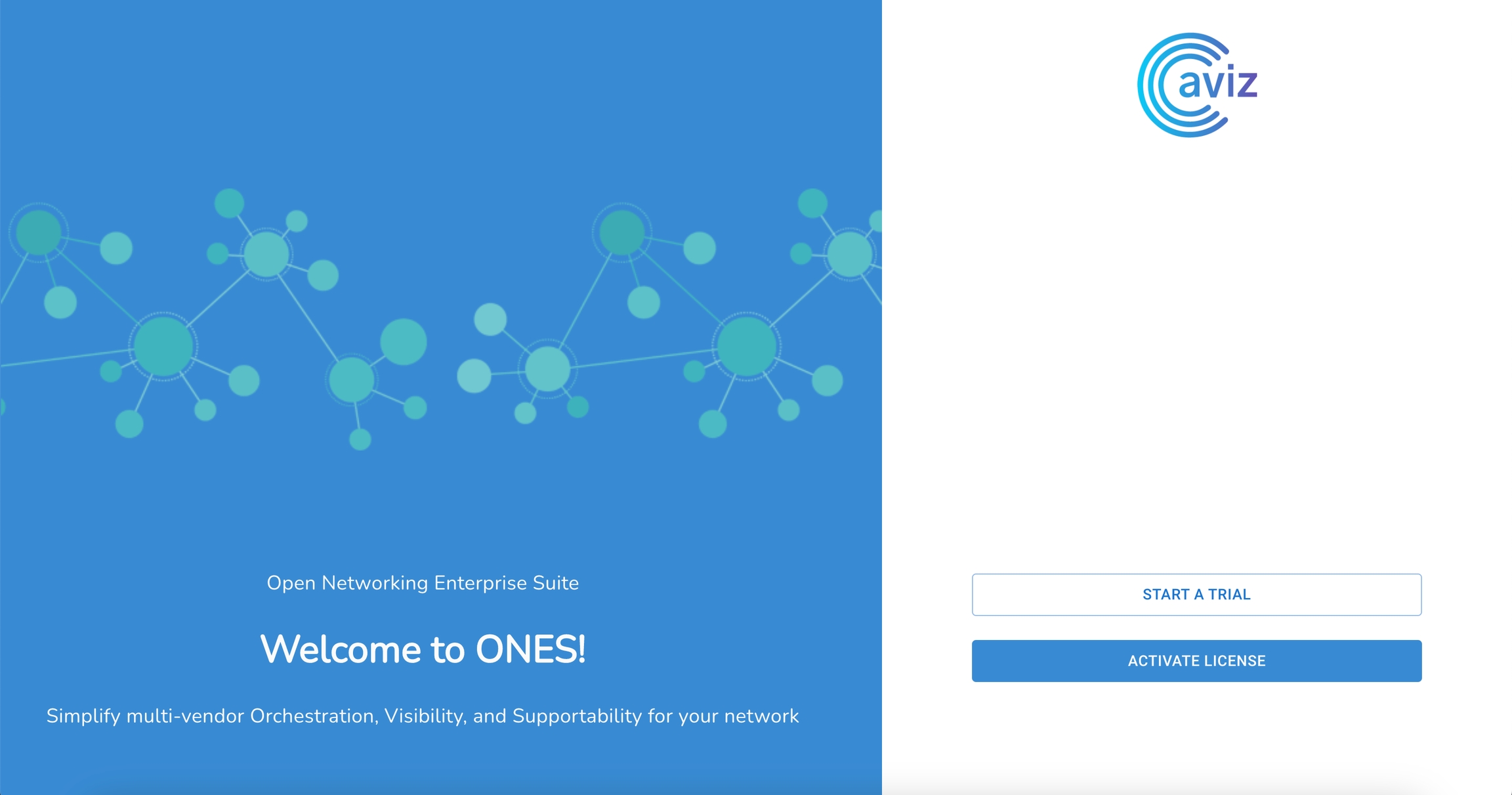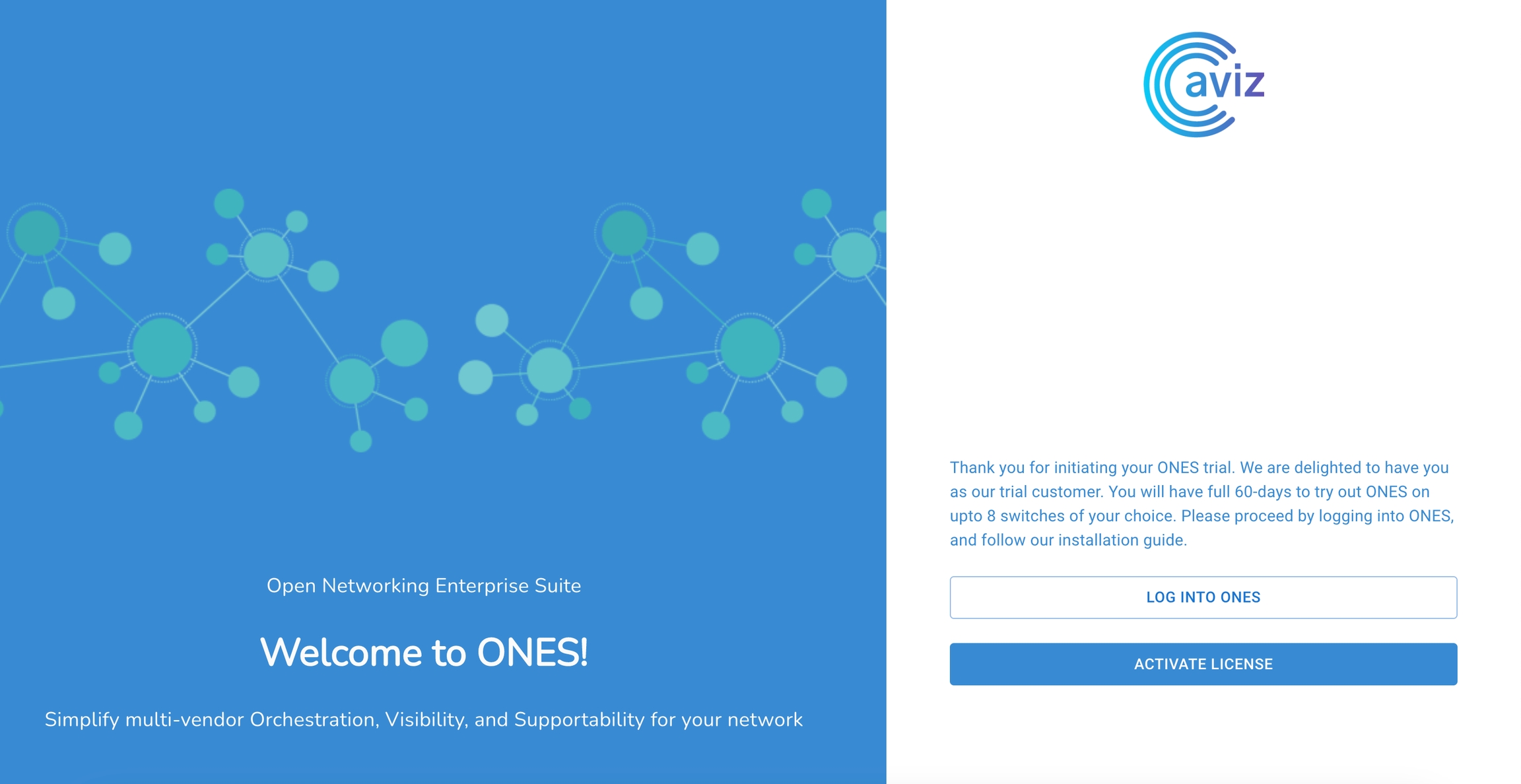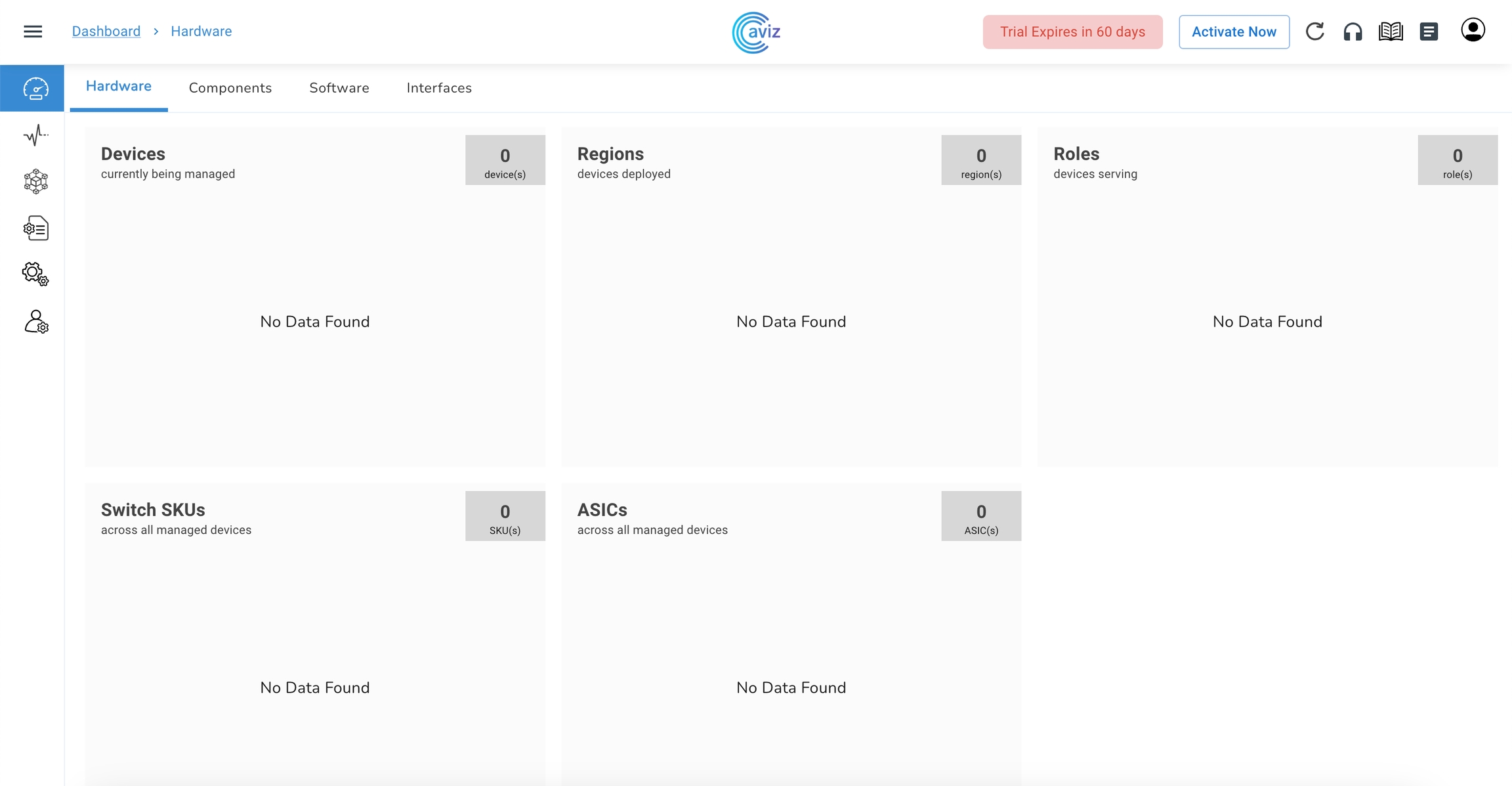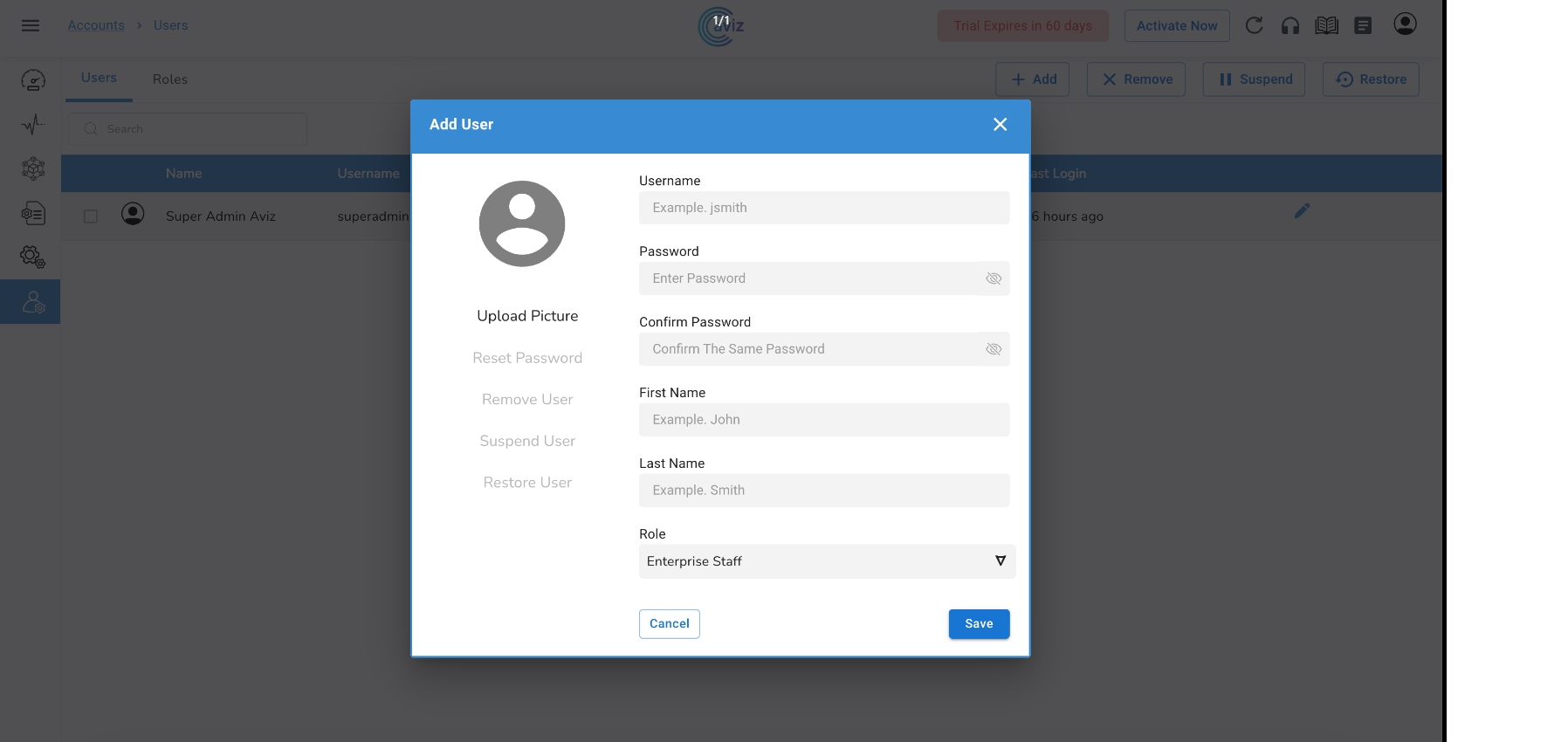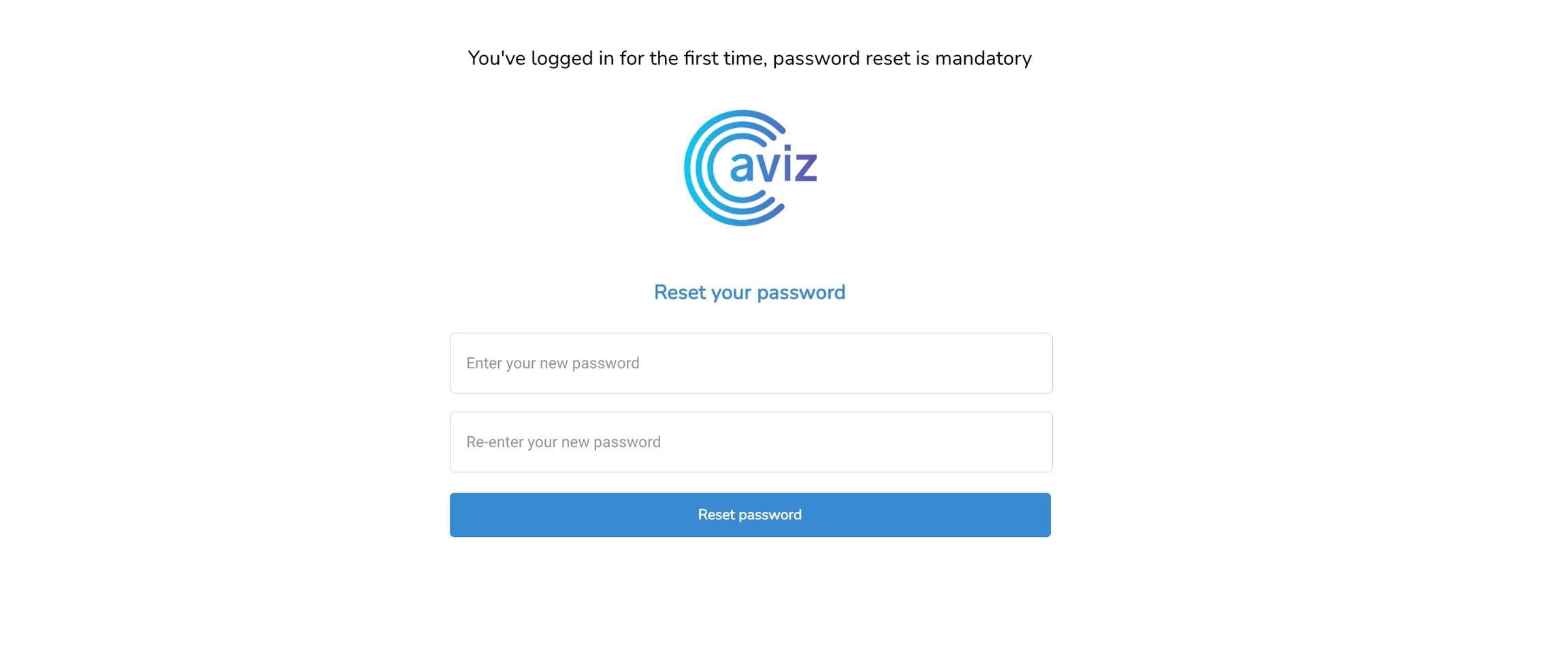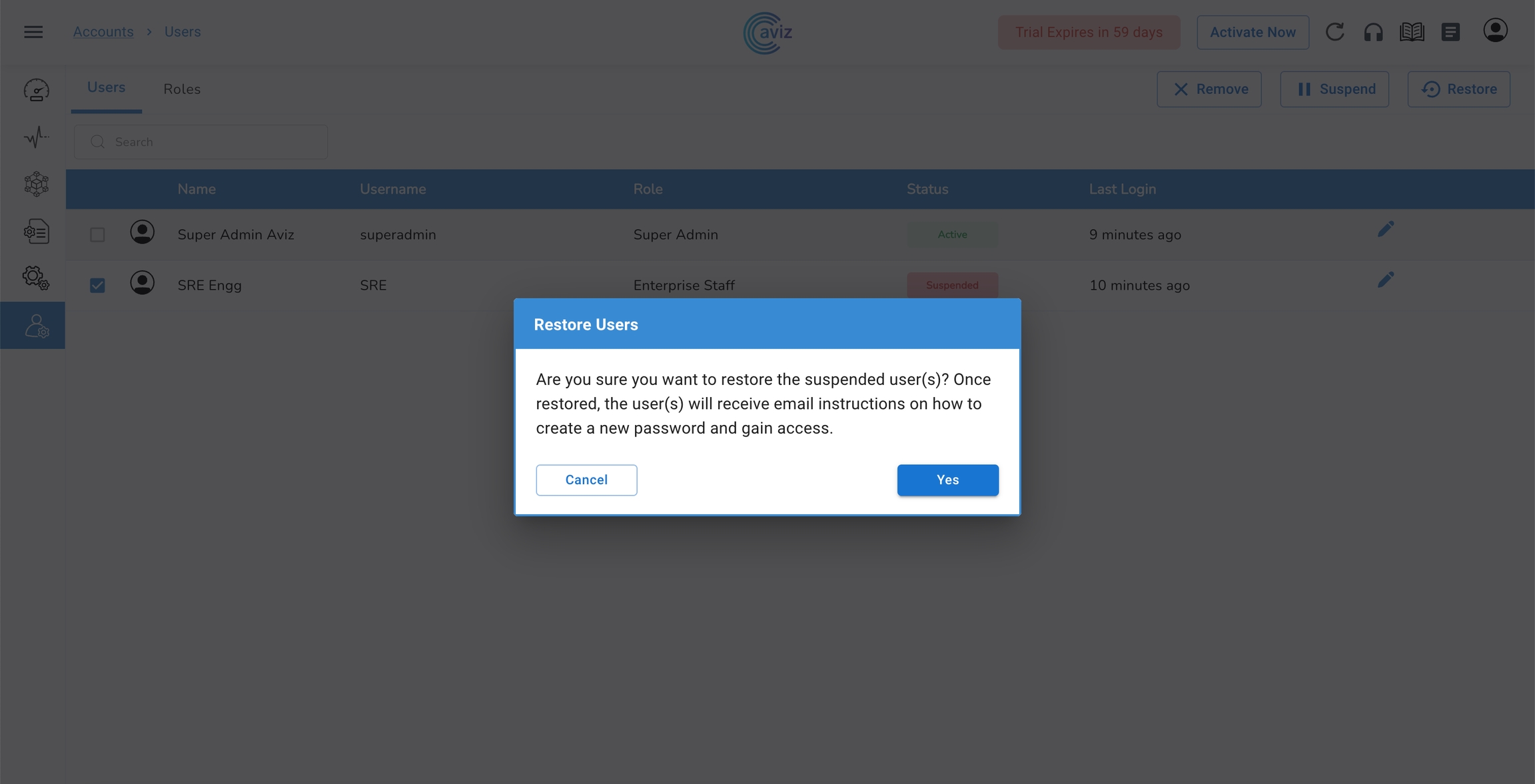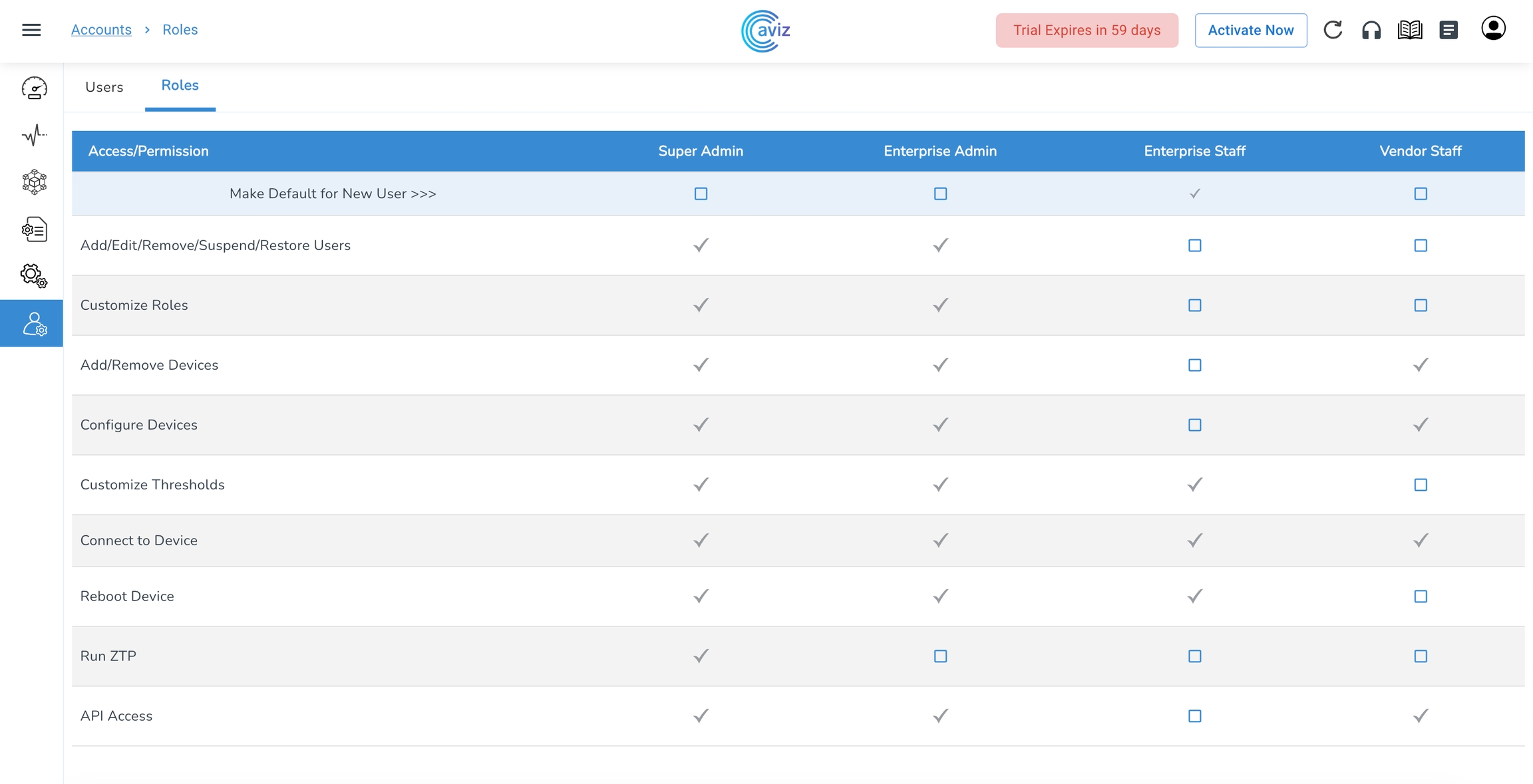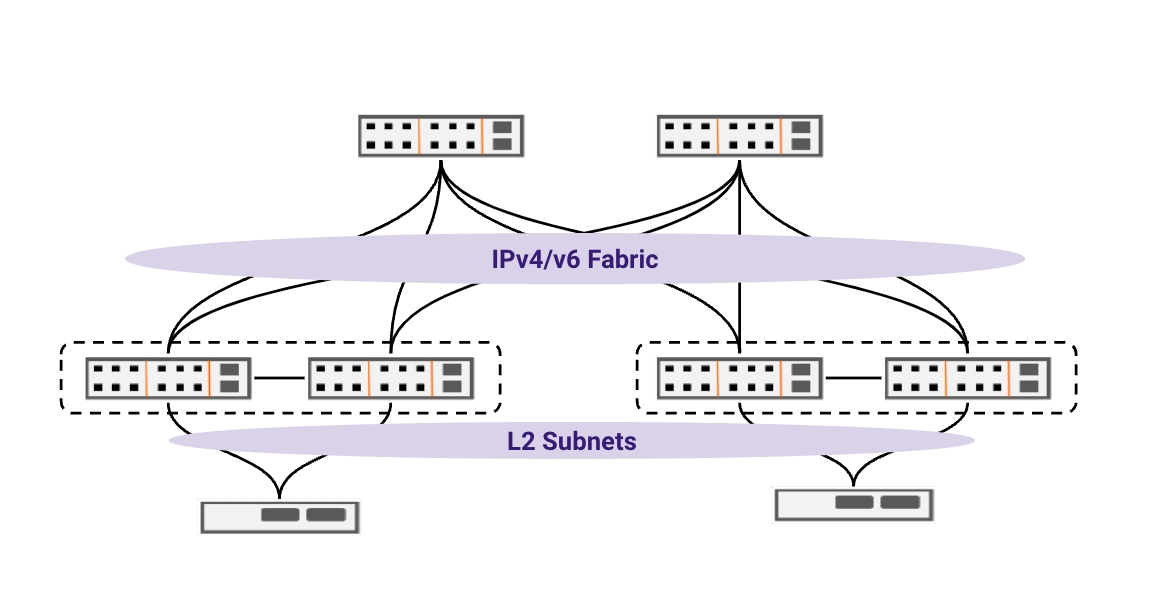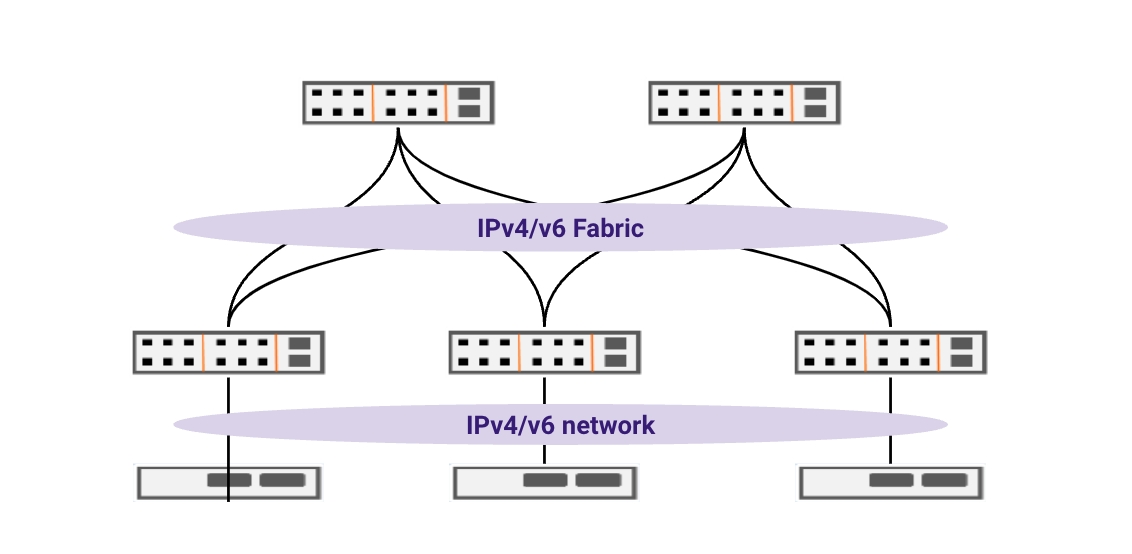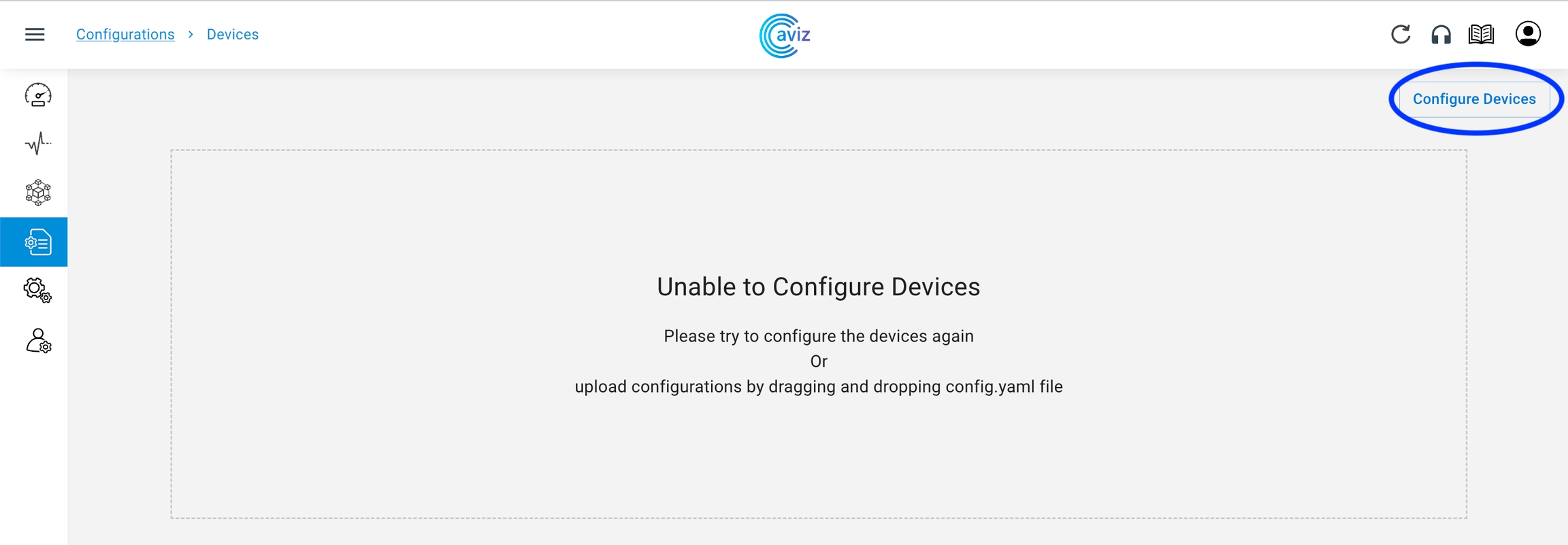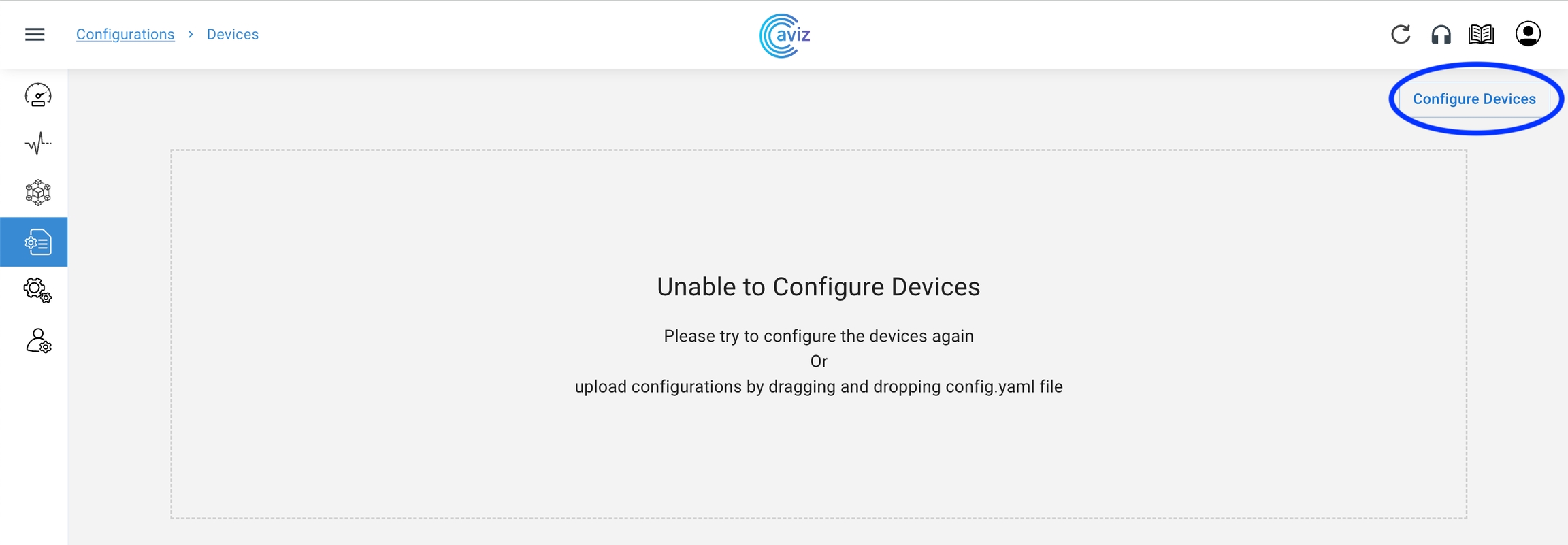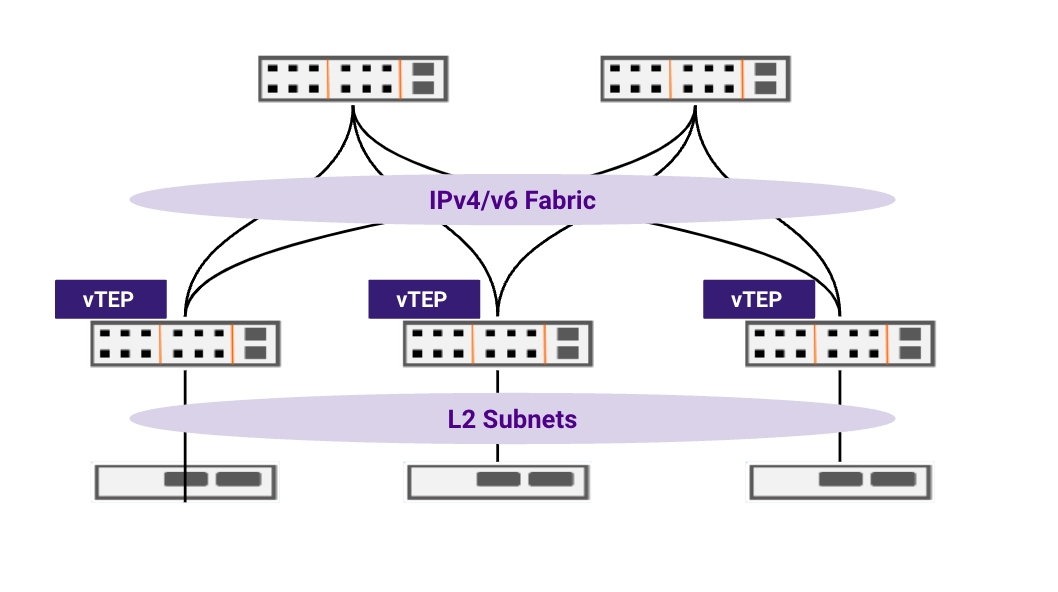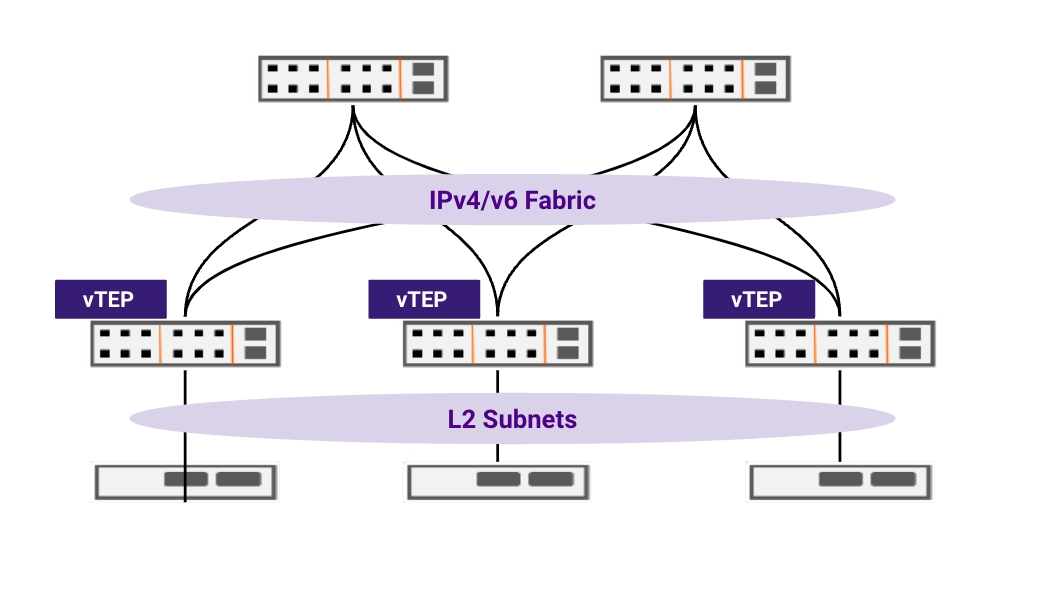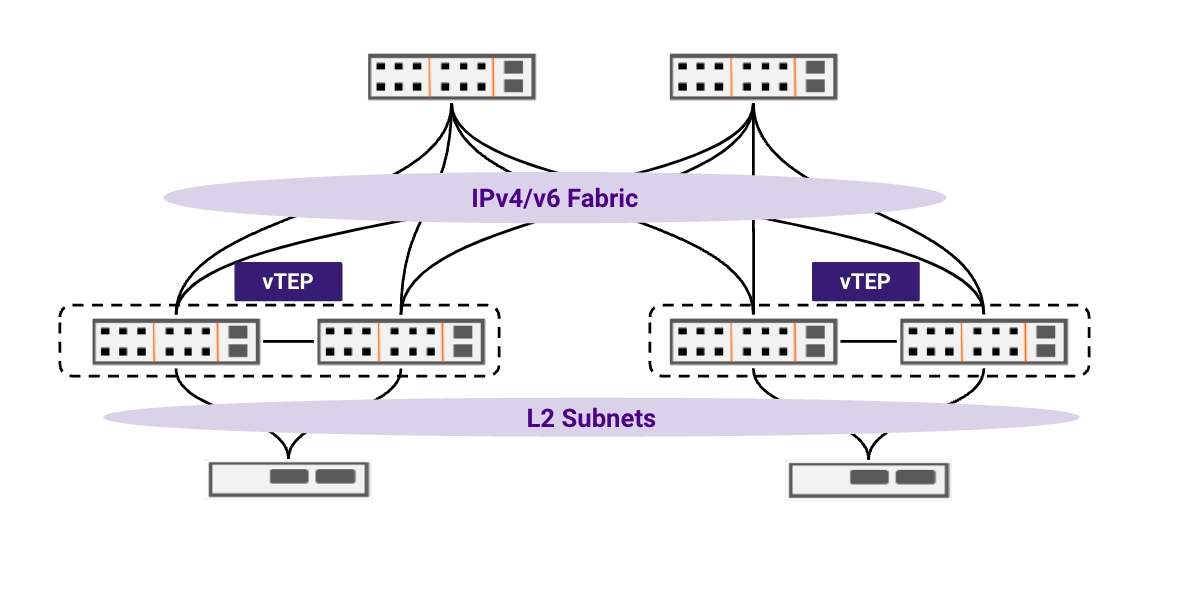Loading...
Loading...
Loading...
Loading...
Loading...
Loading...
Loading...
Loading...
Loading...
Loading...
Loading...
Loading...
Loading...
Loading...
Loading...
Loading...
Loading...
Loading...
Loading...
Loading...
Loading...
Loading...
Loading...
Loading...
Loading...
Loading...
Loading...
Loading...
Loading...
Loading...
Loading...
Loading...
Loading...
Loading...
Loading...
Loading...
Loading...
Loading...
Loading...
Loading...
Loading...
Loading...
Loading...
Loading...
Loading...
Loading...
Open Networking Enterprise Suite (ONES) is a Network Orchestration, Visibility, and Assurance solution for multi-vendor and multi-NOS operated Network Infrastructure. ONES provides a one-stop solution from delivering deep visibility into your datacenter networks to extending 24x7 support functions for SONiC. It also hosts a powerful analytics engine that assists users to identify network issues and troubleshoot their networks, in case of common network anomalies and disruptions.
ONES uses a YAML-based Device Discovery Template for adding switches and continuously collects streaming telemetry data from them to provide insights on;
Data Center Inventory
Network State
Platform and System Health
Control and Data Plane resource utilization
Traffic Utilization
Software Compliance
ONES monitors various control and data plane metrics to provide these insights.
ONES orchestration provide network admins to automate the fabric configuration using configuration templates for provisioning physical interfaces, layer 3 configuration for building IP-CLOS fabric using BGP as a routing protocol including BGP-unnumbered, system services including NTP, SNMP, SYSLOG etc. ONES orchestration not only configures the fabric but also make sure the Fabric is operational by doing verifying the configuration at every stage.
ONES provides north bound API access for configurations originating from external orchestration tools.
Orchestration refers to tasks or actions required to achieve a set of objectives for your Network Infrastructure operations
A centralized application like ONES translates these objectives into a network configuration template, applies and monitors to validate the operational efficiency and functionality
Automated tasks are performed on your Network Fabric in a purposeful order and each step is verified for success before moving to the next
ONES Orchestration function on the application lets you compose, deploy, and validate network configurations across any SONiC, be it a Community version or a Vendor distro.
As part of the initial release, ONES Orchestration supports to
Create and configure CLOS topology for ToR, Leaf, Spine, and Super-Spine layers
Apply and validate configurations pre- and post-deployment
Compare running configs against applied configs at any point
Upgrade devices with a single click via ZTP or custom NOS images
Yaml-based config for VXLAN, MCLAG, BGP IP CLOS & EVPN(L2VPN)
Automate Configuration of interfaces, layer 3 interfaces, BGP-unnumbered and Common Services like NTP, SNMP, SYSLOG etc.
ONES Orchestration use cases are configured using a set of pre-defined YAML-based templates on ONES Web User Interface
Network Assurance helps the NetOps team validate policy and security compliance checks before making a change in network configuration, an intelligent set of proactive and predictive techniques that validate the Network for readiness without error, conflicts, and disruptions
Aviz Support team is located across four timezones offering 24x7 SONiC and related product support for multi-vendor switches and ASICs. Using our support portal, we offer you to
Collaborate with our SONiC experts to expedite your evaluations
Speed up your SONiC troubleshooting SLAs to as low as 15 minutes regardless of the underlying Switch/ASIC platform
Minimize operational delays by centralizing issues across multiple platforms
Supports Options are available:
Integrated Chat
Submit a Ticket
Send an email to support@aviznetworks.com
To connect with customer support users can choose the support option available on ONES-UI
Users can reach out to customer support on
Refer to the "" section of this document for more details
ONES Telemetry Collector(s) and Analytics bring truly unparalleled visibility across all your switches running SONiC (both community and vendor distros), regardless of the underlying ASIC. ONES front end (UI), will enable network admins to;
Manage inventory of your network devices running SONiC on Broadcom, Cisco, Marvell, Nvidia ASICs
View the topology of the entire fabric across multiple hardware platforms, and network operating systems
Monitor traffic, system health, bandwidth utilization, & more
Track Switch CPU/memory consumption, bandwidth, link failures, traffic errors, and more in real-time
Proactively identify and resolve issues that may lead to network downtime
Instantly connect to individual devices for maintenance and troubleshooting
Traffic widget was not showing proper data
Password complexity issue
BGP neighbour count issue
BGP AS number getting doubt issue
ONES Function
Device/Switch Count
Telemetry for Visibility
1024
Orchestration
64
ONES provides the following subscriptions to manage and monitor the devices.
32
Support up to 32 devices
64
Support up to 64 devices
128
Support up to 128 devices
256
Support up to 256 devices
512
Support up to 512 devices
1024
Support up to 1024 devices
Free(60Days Trial)
Support up to 8 devices
ONES Installation follows the below steps in the order sequence of;
License Readiness
Preparing and Installing ONES Application machine
Installing ONES Agents on SONiC Switches for Orchestrator and Telemetry
Enabling OpenConfig on non-SONiC Switches for Telemetry
The installer allows a default capability on managing 8 devices without a license. Beyond this, the following license keys are required for proceeding with the Installation;
ONES Application License (As per device count)
To obtain a license, contact support@aviznetworks.com providing the below details;
License Type - Evaluation Trial or Full
Devices Count - 32, 64, 128, 256, 512 or 1024
ONES installation ID
Email ID: (For Account creation)
Users can get ONES installation ID on ONES-UI Login page after the installation
In the current release, ONES can support managing up to 1024 devices. For ONES Application Installation, the system hardware requirements vary based on the number of devices to manage;
128
x86/x64 based 4-core CPU with 16GB of RAM
256GB
256
x86/x64 based 4-core CPU with 32GB of RAM
1TB
Ubuntu 18.0 or later
docker, docker-compose
python3, python3-pip
paramiko
scp
Ubuntu Server
Installer file (Version 18 or higher)
hostnamectl
Update to latest packages
sudo apt-get update
NA
Install Docker
sudo apt-get install docker.io
docker ps
Install Docker-compose
sudo apt-get install docker-compose
docker-compose version
Install Python3
sudo apt-get install python3
python3 –-version
Install Python3-pip
sudo apt-get install python3-pip
pip3 –-version
Install Paramiko
sudo apt-get install python3-paramiko
pip show paramiko
Install SCP-Client
sudo pip3 install scp
pip show scp
ONES Web GUI
443
Switch Access over SSH
22
ONES Monitoring
50052
gNMI Gateway (Telemetry)
9339
ONES Telemetry Database
5432
ONES API service
8885
ONES Orchestrator
8787
ONES Orchestrator Database
2345
NOTE: These port numbers should be available to use and all ports must be allowed in the firewall if the Database server and devices are in the different DMZ zone
SSH is enabled
Network Reachability from ONES Application
OpenConfig feature is enabled (for non-SONiC Switches)
Google Chrome version 107 or later
Mozilla Firefox version 106 or later
Work with Aviz Sales/Support contact to create an account on Aviz Networks Support Portal
Click on the Downloads section, under ONES, click to download ONES Release 1.1
Copy ONES Release 1.1 package (tar.gz) to ONES Application machine
Login to with your account credentials
Deep Telemetry for ASIC and Switch Hardware
Device Inventory details on
Network Operating System (NOS)
Firmware versions - ONIE, BIOS, and CPLD
Hardware SKU, Model, ASIC, and Serial Number
Platform Components – Fan, PSU, Sensors
Link/Interface Health – Speed, Connectivity, Transceivers/Cables
Inventory Operations
Adding/Removing devices using YAML
Agent Status Monitoring
Device Monitoring
Device Up/Down State based on Agent and Agent-less
Region and Zone Mapping
Device Roles – Access, Leaf-Spine, Super-Spine
Network Compliance with version checks on
Telemetry Agent
Orchestrator Agent
ONIE, NOS, and Linux Distros versions
Resource Trends
CPU and Memory Utilization
PSU and Fan Readings
ASIC Capacity for Routes and ACLs
Software and Kernel Route capacity
Packet Counters – IN/OUT, Errors/Discards
Topology View
Device Connectivity view across Roles and Location
Link/Connectivity Status
Routing Protocol
BGP Neighbors
Advertised and Received Prefixes
Local AS Number
Orchestrator Use Cases
YAML-based Configuration push
Image Management via ZTP
BGP Numbered and Unnumbered Configuration
NTP, SNMP, and SYSLOG Configuration
Licensing
Application License
Telemetry Agent License
Orchestrator Agent License
Add/Edit/Delete User
Role Management
API Access for configurations originating from External Orchestration Tools
ONES allows users to leverage pre-defined templates, and customize them for Ports, IPv4/IPv6 Routes, BGP-Unnumbered, and Switch Services (NTP, SNMP, SYSLOG, ZTP, etc.) functions
Navigate to Inventory
This page gives the control to onboard the devices with two options
Add/Remove Devices using the YAML Editor
Upload the YAML file containing the device list
Click on Add/Remove Devices
Upload Device Inventory using YAML Editor
Navigate to Inventory >> Devices >> Add/Remove Devices
Use the below format to add devices to the application
Make sure to use the correct indentation for the YAML files
Make sure the Switch Name matches to Hostname of the switch
Click Save & Apply
ONES Application is now ready to manage the added devices
On the Application machine, go to GAv1.1/ones_t_agent folder
root@ones-application:~$ cd /GAv1.1/ones_t_agent
Enter device details (Management IP, Username and Password ) in device_info.csv
root@ones-application/GAv1.1/ones_t_agent:~$ vi device_info.csv
Save the File
Verify and Clean up old versions of Agents running
root@ones-application/GAv1.1/ones_t_agent:~$ python3 ones_agent_uninstaller.py
Execute the installation script can be used for installing telemetry agent on one or more devices in the data center.
root@ones-application/GAv1.1/ones_t_agent:~$ python3 ones_agent_installer.py
The dashboard provides the NetOps with an overview of the data centre. It contains the entire hardware inventory of the network and shows the status whether these switches are streaming or not streaming.
After the Installation of ONES Application for the first time, the Dashboard is empty and Devices need to be onboarded for them to reflect
Dashboard will be used to
monitor the status of an agent running on all the devices present
Device Roles and associated Regions and
Details of Switch Hardware SKU and ASICs
Navigate to Dashboard >> Components
Navigate to Dashboard >> Software
Navigate to Dashboard >> Interfaces
Using this page a user gets the status of
the cables utilized in the network
how many pairs of cable can be used for future topology (helps the admins in capacity planning)
interface to identify if any power failure is happening over the interface
Devices
Status of Switch
Not Streaming: The device is Inactive/Unreachable
Streaming: The device is in a Working state
Regions
Status of Regions, their Location and Device Mappings
Roles
Device Roles in Customer Environment
Super-Spine
Spine
Leaf
ToR
Switch SKUs
Switch Hardware Vendor, Model Number and SKU
ASICs
ASIC Vendor, Model and Hardware version details
PSUs
Shows the list of
all faulty Power Supplies across managed switches
LED status of managed switches
Fans
Show the list of
all faulty fans across managed switches
airflow direction of faulty fans for troubleshooting
Transceivers Temperature
Temperature readings and alerts for Optics
Transceivers Voltage
Voltage readings and alerts for Optics
Telemetry Agent version
version across all managed switches
distribution of Agent-based vs Agent-less switches
Device Status (Up/Down) based on Distro
Orchestrator Agent version
version across all managed switches
Agent Health - Up and Down
Network OS
NOS status and version across all managed switches
Distribution based on NOS versions
Device Status (Up/Down) based on NOS versions
Linux Distro
version across all managed switches
Distribution based on Linux Distros
Devices Status (Up/Down) based on Linux Distro
Interfaces
Total number of ports available across devices
Status of Up interfaces across devices
Unused interfaces across the devices
Cabling
Total number of cables used across devices
Cable type used across device
Fiber
Copper
Count of cables required for unused ports
Interface Flapping
Information on Flapping Interfaces
Agent Status of a Device for a Down
Interface Historical Flaps starting with 15-minutes interval
Provides two types of Status:
#of interfaces flapped
Device not streaming
On the ONES Application server, go to GAv1.1/ones_fm_agent
root@ones-application:~$ cd /GAv1.1/ones_fm_agent
Enter device details (Management IP, Username, Password ) in device_info.csv
root@ones-application/GAv1.1/ones_fm_agent:~$ vi device_info.csv
Save the file
Execute the installation script
root@ones-application/GAv1.1/ones_fm_agent:~$ python3 deploy_fmcli.py "install"
Verify the Installation success by running the fmcli command on individual devices
root@Switch:~$ sudo fmcli
Cumulus support limited to available Open Config models, is considered by ONES as Agent-less
SONiC-based switches require ONES Agents (Agent-based) to be installed on the switch being monitored, as a pre-requisite for ONES Telemetry and Orchestrator based functions to work.
ONES Telemetry Agent
ONES Orchestrator Agent
ONES does not support Orchestrator-based functions on Proprietary NOS (non-SONiC).
SSH access
SONiC version beyond 202012 or 202111 are supported
Only x86 intel-based architectures are supported
Proprietary NOS like Arista EOS, Cumulus, and Cisco NX-OS does not require an ONES Agent and instead leverage (Agent-less) feature. OpenConfig extends APIs that provide Network Telemetry information about the resources being monitored via (gRPC Network Management Interface) protocol to the ONES Application
NOS
ASIC
Switches
Community SONiC
NVIDIA, Broadcom
SN2010, SN4700, SN 2700, SN2100, SN3700, DellEMC-S5212f-P-25G
SONiC Distros
Broadcom
EC9716, EC4630, EC7326, RA-B6510-48V8C(Ragile Networks), CELESTICA-BELGITE
Cumulus*
NVIDIA
SN2010, SN4700, SN 2700, SN2100, SN3700
To access the ONES application, use Server IP with HTTPS
https://<host-ip>
Use default credentials to login, refer Installing ONES Application page for default credentials
This section explains how you can upgrade the device OS using ONES.
You can onboard all the devices on the application and can get a complete view of all the populated tables
The Inventory tab has the below mentioned features:
Custom OS upgrade: Upgrade the device OS with any customised image. You need to provide the correct path to ensure the OS is updated successfully
OS upgrade via ZTP: Upgrade the device OS via Zero touch provisioning
Reboot devices: Reboot the device from a single click in the UI
Add/Remove devices from the dashboard: You can onboard the devices using the YAML file upload or via in-built editor in the UI
Navigate to Inventory >> Devices
Using this tab, user can:
Onboard the device to the application using ADD/Remove Devices
Upgrade the device using Custom Upgrade
Upgrade the device using ZTP (Zero Touch Provisioning)
Reboot individual devices or multiple devices by selecting them in one click
Upload Device Inventory using YAML editor
Navigate to Inventory >> Devices >> Add/Remove Devices
Use the below format to add devices to the application
Make sure to use the correct indentation for the YAML files
Make sure the Switch Name matches to Hostname of the device
Click Save & Apply
ONES Application is now ready to manage the added devices
Role / Region: Shows the device roles and regions
SKU / ASIC: Shows the device hardware SKU and ASIC vendor
Port / Max Speed
Shows the number of ports per device and max ports speed on the device
Click on the number of ports to get a detailed view of all the ports on a particular device
PSUs / Fans: Shows the total number of Power supplies and Fans present on a particular device
NOS Image: Shows the details of the network operating system running on the device and when it was last updated
ONIE Version: Shows which ONIE version is running on the device and when the last reboot time of the device
Agent Version / Network OS: Shows the agent version running on the device and the current active OS version on the device
Agent status / Last contact: Latest status of the Agent and when it was last communicated with that Agent.
Connect: Using this feature we directly get the CLI access of the device, so we can use this if we need some tuning or need to push some extra config
Details: This last option we can again use to get the details of the device
Navigate to Inventory >> Devices >> Add/Remove Devices
Remove all the inputs entered by the user
Click Save and Apply
Once the application detects, a user is trying to remove devices it shows one confirmation dialogue box to cross-check the status
Now all the devices have been removed from the ONES application
This feature gives the control to upgrade the device to the new version
An HTTP image link is required to use the custom upgrade
Select any of the devices to upgrade to the new version
Click on Custom Upgrade
put the new Image URL and then Submit
Using this page a user can directly upgrade the box
Select any of the devices to upgrade via ZTP
Click on Upgrade via ZTP
Click on Yes
Here we will see how we can reboot a device using
We have the option to choose one or multiple devices at a time to reboot
Choose one of the devices that we want to reboot
Click on Reboot
Click on Yes
Navigate to Configurations >> Devices
Allows you to configure new devices
Supports valid YAML files
You can download the sample YAML file, edit it, and upload it again with the desired configuration
The monitor widget in ONES:
Shows the complete topology view of the fabric
The Topology view can be filtered by:
Region
Brick
This page shows all the links and information connected to each other
Low and high utilization of all components
Input / Output errors on links
ASIC detailed view of all managed devices
BGP status
Neighbour Count
Neighbor status (Up/Down)
Prefixes (Total/Advertised)
ASN
Traffic View
input/output packets in million per sec
Errors and Discard packets per interface
NOTE: If all the managed devices have the same Region/Brick ID, we do not get any filter ribbon
Navigate to Monitor >> Topology
This shows the complete Topology view, how the devices are connected and to which role they belong to
We can put the filters to check the customized view of the Diagram by: Region Availability Zone Brick ID
NOTE: we do not get filter ribbon if all devices belong to the same Region/Availability Zone/Brick ID
We can also check Down Links to check the topology those are having links in the shutdown state as per Role
Super Spine
Spine
Leaf
ToR
When we hover the cursor over any device, we get the device status and device details popup
Users can easily filter the view as per the Region, Availability zone and Brick ID
This page gives a view to the user for all the possible connected links between devices with a few more capabilities
Navigate to Monitor >> Links
This page helps a user to get the best view of the number of connections between devices with speed and other manufacturer details
This page gives the exact view of the interface name, interface speed, transceivers and admin & operator status
We can also have a filtered view of links
Choose a specific Role and Region to filter
let's choose:
Role: ToR
Region: San Jose
This page shows the latest utilization of the devices with CPU & Memory utilization, Temperature & Voltage of PSU, and fan speed in RPM
Navigate to Monitor >> Platform
Platform Status is reported for the following components
Roles
SKU/ASIC
Ports/Max Speed
CPU Utilization (%)
Memory Utilization (%)
CPU Temperature (℃)
PSU Temperature (℃)
PSU Voltage (V)
Fan Speed (RPM)
We can check the health of the device as per some customization
We can filter the devices by:
Roles
Region
We can choose a role using the available Role-based option
4 Roles available
Super Spine
Spine
Leaf
ToR
Let’s check it with a ToR filter
After selecting ToR input, here is the new view of only devices that belong to the ToR Role
We can choose a role using the available Region-based option
Two roles available
San Jose
Asia Pacific
Let’s check it with Asia Pacific Region
After selecting Asia Pacific input, here is the new view of only devices that belongs to the Asia Pacific Region
We have the liberty to do the filtering by both combination Role-based and Region based at the same time
As of now, we have two Region available
San Jose
Asia Pacific
3 Roles available
Super Spine
Spine
Leaf
ToR
Let’s check it with a combination of Asia Pacific & Spine Role
After selecting both Roles and Region-based filter, here is the new view of the device that belongs to the Spine role and parallel belongs to Asia Pacific Region
This Platform Widget also gives the option to check the extended capability view of the device
Apart from this monitoring view, we can also verify/check extended feature sets like:
PSU Current (A)
PSU Power (W)
Services Running
Services CPU/Memory Consumption (%)
To view per device status including these new widgets, click on any of the device statuses present on the Platform tab
When we choose a specific device we get an output like this
Here we get the complete status of CPU utilization with a time range A complete status What was the utilization from starting to end
To check a specific time detail we can hover the cursor to any level
Now here we get the status of memory utilization of selected device
To check a specific time detail with memory utilization, we can hover the cursor to any level
This template shows the status of CPU temperature in degree celsius
Here we get the status of all the CPU and Core running on the device
To check a specific time detail for all the CPU/Cores, we can hover the cursor on any level
We can also check Per CPU Core details
We can see here the customized view per CPU Core
Here we get the status of the FAN speed percentage level across all fans available on the device
To check a specific time detail we can hover the cursor on any level
We can choose to view the customized view of a few fans at once
Here we can see the output of fan1 and fan7 in this customized view
When we move the cursor to check the exact status of fans at a particular time
This widget provides the status of the Power Supply Unit (PSU) temperature (in degree celsius) across all power supplies available on a particular device.
To check a specific time detail we can hover the cursor on any level
We can choose to view the customized view of a few PSUs at once
In our case, we have 2 PSUs, so now let's choose one of them and check the output
When we move the cursor to check the exact status of the PSU at a particular time
This widget provides the status of the Power Supply Unit (PSU) voltage across all power supplies available on a particular device.
To check a specific time detail we can hover the cursor on any level
Same we can check the customized view by choosing one or two PSUs
Let us choose one of the PSU to check individual Voltage, so here we have taken PSU2 to check individual Voltage
This widget provides the status of the Power Supply Unit (PSU) current in Amperes, across all PSUs available on a particular device.
To check a specific time detail, hover the cursor on any level
Same here as per other power supply customized views we can also check the customized view here by choosing specific PSUs
Here we get the status of Power supply power in Watt across all power supply present on the device
To check a specific time detail we can hover the cursor on any level
We can also check the customized view of this
The best widget here for Services
We can also check the total number of count of services running on the platform
This graph shows the red colour bar, red colour show at what time one of the services went down
To check a specific time detail we can hover the cursor on any level
Here we get the name and count of all the services running on the platform
This widget shows us the CPU consumption percentage level of all services / per service.
Here we can see we have the option to check the consumption view of CPU
To check a specific time detail we can hover the cursor on any level
When we get this output we get a clear view of both CPU Utilization per service based
We can also customise the view of this widget by choosing some specific application
We have all the services button here to choose
Again we can check the view of all the services we need
So here is the view of only the BGP service
We can see the CPU and Memory consumption for these 2 services
This widget shows us the Memory consumption percentage level of all services / per service.
Here we can also check the consumption view of only Memory.
To check a specific time detail we can hover the cursor on any level
Here we get a clear view of Memory Utilization per service based
We can also customise the view of this widget by choosing some specific application
We have all the services button here to choose
So here is the view of only the BGP service
This page shows the view of ASIC Capacity and a few more details related to ASIC
This widget Shows
Roles/Region per device
SKU and ASIC details per device
ASIC Route Capacity in IPv4 & current utilization
ASIC Route Capacity in IPv6 & current utilization
ASCI ACL capacity & utilization
Software routes for IPv4 and IPv6
Kernel Routes for IPv4 and IPv6
This ASIC Widget give us the control to get the output per Role and Region basis also
Let's choose Leaf Role to get the customized view
In the same way, we can customize the view by Region
This widget gives us the capability to check the extended view of the Routes & ACL usage with a range of time
Click on any of the devices to get the extended view
This BGP Page shares the data of BGP neighbours present across managed devices
This shows the status of the neighbour's details, the total number of neighbours, received routes, neighbour RID, BGP AS number & much moreWe have the option here to check the neighbour details and status of RoutesWe can click on neighbours to get more details about all neighbours connected
The user can get per-device status by choosing a particular neighbour
Click on the device name to get the status
This new page shows the status of BGP neighbours about UP and Down status
On right side it shows the BGP announcements and the local prefixes present in BGP table
This page gives us the power to check neighbours as per Roles and Region-based
Let's check how we can filter as per Role-based
Here is the global view of all the Devices with BGP status
Choose Leaf Role to check customized view
After having only Leaf Roles here is the modified output
Using this widget we can check the input and output errors across all the devices
This widget also shows the input and output packet per device
Navigate to Monitor >> Traffic
This page shows the information:
Bandwidth utilization in percentage
Input packets per second in millions
Output packets per second in millions
Input packets
Output packets
Input and Output discards
When we click on any particular interface it gives the timescale of the inputs and output packets with Errors and Discards & all metrics in detail
This page shows the traffic drop rate per interface based and will be very useful while doing any troubleshooting for a traffic drop
Using these details a user can check more details inside to fix the issue of dropping/discarding packets
NOTE: Follow the to know more about configuration
Hostname
Hostname of the managed device
Role
Role of the device
Port/Interface
Interface details
Port Speed
Link speed of connected devices
Transceiver
SFP/QSFP Optics statuts
Manufacturer
Device Manufacturer
Manufactured Date
Date of Manufacturing
Admin and Operator status
Local and Remote status of link
HOST / IP
Device Name
Device IP
Roles/Region
Device Role
Device Region
SKU/ASIC
SKU (Stock Keeping Unit)
ASIC
Port/Max Speed
Total number of ports available
Speed of ports
CPU Utilization (%)
CPU Utilization reported in 4 states
Normal
Acceptable
Critical - Action needed
Not Streaming - Agent is not up
Click on any device to get the view/status of all the components related to that device
Memory Utilization (%)
Memory Utilization reported in 4 states
Normal
Acceptable
Critical - Action needed
Not Streaming - Agent is not up
Click on any device to get the view/status of all the components related to that device
Average CPU Temperature (C)
Details of the temperature of the CPU across all the devices in degrees celsius
Any device that breaches the configured acceptable or critical value will be shown here
Click on any device to get the view/status of all the components related to that device
Average PSU Temperature (C)
Power Supply Temperature in degrees celsius
Any device that breaches the configured acceptable or critical value will be shown here
Click on any device to get the view/status of all the components related to that device
PSU (Voltage)
Power Supply Voltage readings in volts
Any device that breaches the configured acceptable or critical value will be shown here
Click on any device to get the view/status of all the components related to that device
Average Fan Speed (%)
Fan Speed in % of maximum supported RPM
Any device that breaches the configured acceptable or critical value will be shown here
Click on any device to get the view/status of all the components related to that device
1
Time Frame: Check Utilization Trends based on Time Range The application has the capacity to store up to 2 weeks of data
2
Refresh Component Status
3
Raise a Ticket for Technical Support
4
Device Details
Platform
Number of Ports and Speed
Agent Version
Uptime
CPU Utilization
Memory Utilization
CPU Temperature
Services running on the device
ONES requires user to install the below agents on SONiC NOS to allow Network Orchestration and Visibility
ONES Orchestrator Agent for Network Orchestration
ONES Telemetry Agent for Telemetry Data Streaming (Network Visibility)
NOTE: for non-SONiC switches,
OpenConfig feature on its NOS needs to be enabled for Network Visibility (Telemetry Data Streaming)
Network Orchestration is not supported
Roles/Region per device
SKU and ASIC details per device
ASIC Route Capacity in IPv4 & current utilization
ASIC Route Capacity in IPv6 & current utilization
ASCI ACL capacity & utilization
Software routes for IPv4 and IPv6 routes we get in BGP table
Kernel Routes for IPv4 and IPv6 routes that are installed in main Routing table
Feature
Use
When we move the cursor to metrics this gives the usage view of ipv4:
ASIC
Kernel
Software
When we move the cursor to metrics this gives the usage view of ipv6:
ASIC
Kernel
Software
When we move the cursor to metrics this gives the usage view of ACL:
ASIC
Kernel
Software
Here we can get:
Device name
Device IP
Here We get the view of:
Roles and Region
this column shares the details of:
SKU
ASIC
This shared the count of total BGP neighbours
This column share the status of
how many BGP neighbours are UP and running
How many BGP neighbours are in Down state
This column shares the Total Prefixes Present in BGP
These are the total number of advertised prefixes by the router to other BGP neighbours
This is the Local BGP AS number
Here we have the control to check more details on neighbours
Feature
Feature
Here we get the details of connected neighbours
Neighbour Device Name
Neighbour IP
This is the view Roles and Region per neighbour basis
This column shares the neighbour:
SKU details per neighbour
ASIC details per neighbour
Here we get the Neighbour BGP AS number
This shares the neighbour status of uptime, from how long the neighbour is connected
Here we get the detail of the last neighbour reset timer
This share the count of established and dropped connections per neighbour
Here is the view of the Keep Alive timer:
Tx: how many keepalives have been transmitted
RX: how many keepalives have been received
Here is the view of the Route Refresh messages count:
Tx: how many Route-Refresh messages have been transmitted
RX: how many Route-Refresh messages have been received
Here is the view of the Updates Count:
Tx: how many times updates have been transmitted
RX: how many times updates have been received
Using this feature setting we can set the acceptable and critical percentage level for the following device components
This page gives the control over the widget refresh timer and user idle state
Users can set the manual timer to refresh all the widgets after a time interval (default is 30sec)
Users can set the timer after how many minutes of idle state the ONES-UI should be logout
Thresholds we can set for Components
CPU Utilization
Memory Utilization
Fan Speed
PSU Temperature
PSU Voltage
As per requirement, we can set different lower and higher threshold values for each component
User can see the acceptable and critical number of devices in the Monitor Health tab view
Navigate to Monitor >> Platform when any component breach the higher value
Navigate to Settings >> Thresholds
Change the values as per your requirements
Update it to get these new settings live, after Save Changes, all these metrics will be reflected on devices metric pages under Inventory
Navigate to Settings >> System
Using this page, users can change the refresh interval in seconds for all the widget
In the dropdown menu, available intervals are:
30 Seconds
60 Seconds
90 Seconds
120 Seconds
Users can set the timeout in minutes for the ONES-UI
Enable super-user mode
user@ones-application:~$ sudo su
Extract the contents of the downloaded ONES Installer tar.gz file to this folder
root@ones-application:~$ tar -xvf ONES-GAv1.1.tar.gz
Go to GAv1.1 folder on the server machine
root@ones-aplication:~$ cd GAv1.1
Run ones-installer.sh to Install the ONES application function
root@ones-application:~/GAv1.1$ ./ones-installer.sh
NOTE:
By default, the installer has license for 8 devices upto 60days
ONESv1.1 support SSL certificate integration
User can choose YES if the User wants to integrate own SSL certificate
Choose NO, if the user does not have their own SSL certificate and wants to use the certificate provided by AVIZ
The installation allows a user to enable DB backup
Users can choose the local or remote location to backup the database
By-Default application creates a database backup in every 86400 seconds(1 day), but user can modify it as per the requirement
By-Default application creates 5 backups and once it will add one more it will remove the first copy of the database, User can modify the number of backup files at the time of installation
NOTE: The system might have multiple IP addresses, so the user can use any IP to access ONES-UI.
Installation begins
Access ONES Application Web GUI from a supported browser using https://<host-ip>
For Trail, user can choose Start A Trial
Then user can choose Activate License if user has activated key to supporting more then 8 devices
Use Default credentials as below;
Username: superadmin
Password : Admin@123
Update/Change your password on the first login
After Resetting the password use new credentials to login
You will see the default Dashboard → Hardware view
Use this feature to
Create new users and roles
Remove and suspend existing user one by one
Remove and suspend multiple users at the same time
Password reset of existing users
Only super admin or Enterprise admin can perform these actions
Navigate to User Management >> Accounts >> Users
Initially, we get one default Admin User Credential
In this view, we get the User status and Role given to it and the Last login time by the user.
On this User tab, we can Add new users and can remove or suspend any existing users
Navigate to Accounts >> Users >> Add
Admin can add
Profile picture
Username
Password
Password should contain:-
Minimum Password Length - 8 characters
Maximum Password Length - 24 characters
Character Support - Alpha Numeric
Special Characters - (# @ $ ! & % only)
Character Rule - At least one Upper Case and one special character
First and Last Name
Role
Enter all the required details
Click Save
"on the first login by the user with given details, ONES application prompt with a screen to rest the password
Now User is ready to login with valid credentials
Navigate to Accounts >> Users >> Edit User >> Reset Password >> Yes
Using Admin credentials you can reset the user password
Click on Reset Password
Submit & Save
After this user can try login with the temporary password, on the first login, ONES application actively asks to change the password
Navigate to Accounts >> Users >> ((Select Users you want to remove)) >> remove >> Yes
We can remove multiple users at a time
After this, the user will be removed from the database and cannot use credentials to login again
Instead of removing any user, we can also suspend the user
Once we suspend a user it will not be removed from the database but it will be in an Inactive state in the database
Later if we need we can restore the user to its active state
Navigate to Accounts >> Users >> ((Select Users you want to suspend)) >> Suspend >> Yes
Choose users & click on Suspend
Navigate to Accounts >> Users >> ((Select Users you want to restore)) >> Restore >> Yes
Navigate to Account >> Roles
By default, the device comes with these 4 Roles
Super Admin
Enterprise Admin
Enterprise Staff
Vendor Staff
As per the new user access requirement, we can assign limited access to user roles
Navigate to Accounts >> Roles
Now let's add few extra permissions
Add/Remove Devices
Configure Device
Run ZTP
This section explains how large data centers can be designed seamlessly using ONES.
Most fabric orchestration solutions available today are complex and often difficult to understand. ONES provides simple and effective tools, such as predefined templates (YAML file), to configure data centers at scale. ONES allows a customized way of configuring devices that includes enhancements to the standard configuration.
Save Config:
Copy to File:
Restore Config: //If needed only
You need to provide the following inputs to configure the devices:
This section explains the device configuration procedures, that gets applied seamlessly across the entire fabric
Navigate to Configurations >> Devices
Click on the Configure Devices button in the top right corner. This opens a new screen with a sample device configuration. You can edit the configurations directly in the UI to make the desired changes. You can also download the sample YAML file by clicking on Download YAML button, provided at the bottom of the above screen, make new changes and upload the YAML file using Upload YAML button.
Inventory: Specify how many devices you want to add in any particular role - Super Spine, Spine, Leaf, and ToR.
Connectivity: Specify the parameters required to establish link connectivity such as:
Device switch ID: unique ID for every device, required to correctly render the topology
Switch name: hostname of the device
IP address: management address of the device
Autonomous System Number (ASN): BGP AS number to use
Device Credentials: Username & Password.
MCLAG: Multichassis Link Aggregation
Links: links connected with another device
BGP: Specify if you want to enable regular BGP peering or BGP unnumbered peering.
PhysicalIfCfg: Enable or disable FEC and change the MTU settings on all the links being configured.
ASN: Assign a BGP ASN (Autonomous System Number) from the specified pool. Dynamic assigning ASN will be implemented in ONES release 2.0. For release 1.0, you need to specify the ASN under the device configuration, as shown in the sample YAML file.
IPv4Pool: Assign IP pools to different subnets. ONES automatically divides the subnets according to the number of available links.
ONES application uses IPv4 subnets for:
Interfaces
Loopbacks
Host interfaces
To configure BGP neighborship
ONES automatically advertises these subnets in BGP
IPv6Pool: Assign IPv6 subnet.
ONES application uses:
IPv6 subnet for interfaces
Subnets to configure BGP neighborship
Automatically advertise these subnets in BGP
NTP: Provide the NTP server address, to enable NTP. You can choose your desired timezone.
SYSLOG: Provide the SYSLOG server address, to enable SYSLOG.
SNMP: Provide the SNMP server address, to enable SNMP.
VXLAN: this eables the feature of VXLAN
Navigate to Configurations >> Devices >> Configure Devices
Click on Apply Configs button in the bottom right corner of the above screen, to push the configs across the entire fabric.
ONES provides real-time updates when the devices are being configured and validates the configurations automatically to ensure the network is ready to use.
You will see the below screen, after the configurations are successfully verified:
Various fields shown in the top right corner of the above slide are explained below:
This section describes the compare configuration feature of ONES using which you can compare the applied and running configurations.
Navigate >> Configurations >> Devices >> Compare Configs
Compare Config
This page allows the user to compare applied configurations to the running configuration of a selected device.
The user should select only one device from the list and perform 'Compare Config' on this page, it may take several minutes to fetch the running configuration from the device
YAML Editor will appear with two windows comparing applied and running configurations as depicted in the below picture
The difference in configuration is highlighted with color coding in the respective window of the configuration
The merge feature/version control is in our roadmap, as of now the user needs to manually update the changes as per the diff in the compare config.
Configure Devices
Allows to make the config changes directly in the in-built UI editor
Download YAML
Download the sample YAML file and make the required changes
Upload YAML
Upload the modified YAML file
Enable Super-user mode
user@ones-application:~$ sudo su
Navigate to the GA directory on the Server
root@ones-application /home/user $ cd GAv1.2.1
Execute ones-uninstaller.sh
root@ones-application /home/user/GAv1.2.1 $ ./ones-uninstaller.sh
Verify the uninstallation success
docker ps - Docker Images associated with ONES Application should not be seen
https://<Server-IP> is no longer accessible
On the Application server, go to GAv1.1/ones_fm_agent
root@ones-application:~$ cd /GAv1.2.1/ones_fm_agent
Enter device details (Management IP, Username, Password and License key) on device_info.csv
root@ones-application/GAv1.2.1/ones_fm_agent$ vi device_info.csv
Save the file
Execute Uninstaller Script
root@ones-application/GAv1.2.1/ones_fm_agent$ python3 deploy_fmcli.py "uninstall"
Verify The Uninstallation
Access individual switch
Execute fmcli
root@switch:~$fmcli
Enable Super-user mode
user@ones-application:~$ sudo su
Navigate to the GA /ones_t_agent directory on the Server
root@ones-application /home/user $ cd GAv1.2.1/ones_t_agent
Enter device details (Management IP, Username and Password and the license key) on device_info.csv
root@ones-application /home/user/GAv1.2.1/ones_t_agent $ vi device_info.csv
Save the File
root@ones-application /home/user/GAv1.2.1/ones_t_agent$ python3 ones_agent_uninstaller.py
All of the devices will be successfully cleaned up
Device configuration is not yet started
In case of the user has not applied any feature like (VXLAN, MCLAG and so on..)
Device configuration is in progress
The device configuration has failed. Move the cursor to the failed option to see the Error message.
Device configuration is completed successfully
Device configuration is validated successfully
Compare the applied config vs running config on the selected device and highlight the diff changes, if any
is used to configure or modify a configuration when we need to add several other devices with the same file
Aviz Network Support team can be reached by
Mandatory Fields
Subject
Issue Type (Post Deployment, Pre-Deployment, General Query, RMA)
Priority (Low, Normal, High, Urgent)
Description
Optional Fields
External ID (Community Request ID or Past Case Number)
Hardware (Switch Model)
ASIC vendor (chipset)
Serial Number
Host Name
Attachments (Tech Support Dump, Screenshots, Logs)
For Technical Issues, we recommend the description include;
Repro steps, if the issue is reproducible
The sequence of events that lead to the failure state
Artifacts - Tech Support dump (tar.gz file), Logs, Command Outputs, Topology Diagrams
Overview
The current architecture of ONES on-premise backend involves two database engines. One of the engines, TimescaleDB supports storage and access of time series telemetry data while the other, PostgreSQL, supports the same for aggregated CRUD data. The current deployment form factor of these engines is single server. Being the backbones of the ONES application, they therefore require proper functioning to guarantee its overall availability.
In this document, we will first present a few unavailability scenarios relevant to the ONES application. For each unavailability scenario, we will highlight the impact in terms of mean time between occurrences, mean time to recovery, and last but not the least, whether the scenario would require a data recovery/migration aspect. Finally we will propose a standard set of solutions that are recommended by both TimescaleDB and Postgres to handle data and service recovery in such situations.
From the above table, it is evident that even though the scenarios that would require data migration/recovery are infrequent, the availability impact is high. The rest of the document presents a set of solutions, pros and cons of each of them, assumptions, and end user side requirements
ONES provide DB backup service performs periodic backups to remote NFS backup server endpoint provided by the customer. On disaster scenarios, the customers can use our SRE teams to recover the data from backups.
In future, ONES will implement the backup and restore using a DB backup service which performs a transparent migration from single server Postgres/Timescale to distributed Timescale handling both fresh installs and upgrades.
Sending an email to
Submitting a Ticket at
Live Chat on
A ticket could be submitted with or without an account on
Scenario
Impact
Mean Time Between Occurrences
Mean Time of Unavailability
Mean Time to Recover
Service Loss Impact
Data Loss Impact
Need for Data Recovery/Migration
ONES Application Upgrade
Low
Occasional, between releases (major as well as patch)
Low
Not applicable
Low
No
Not required
ONES TimescaleDB and Postgres Upgrade
Low
Occasional, when application needs new database features to be enabled
Low
Not applicable
Low
No
Not required
Application Crashes
Low
Occasional
Mostly low
Mostly low
Low
No
Not required
Database Instance Crashes (Recoverable)
Medium
Proven COTS components, very infrequent
Low
Low
Medium
No
Not required
Database Instance Crashes (Irrecoverable mainly due to data corruption)
High (depends on existing data volume)
Proven COTS components, very infrequent
Very High
Very High
High
No
Required within the same server
Media Failure (Recoverable)
High (depends on existing data volume)
Very infrequent
High
High
High
No
No
Media Failure (Irrecoverable)
High (depends on existing data volume)
Very infrequent
Very High
Very High
High
Yes
Required across different servers
Data Center Disaster
High (depends on existing data volume)
Extremely Infrequent
Extremely High
Extremely High
Extremely High
Extremely High
Cross location
Data Migration due to DB product replacement
High (depends on existing data volume)
Extremely Infrequent
Very High
Very High
High
Yes
Required
